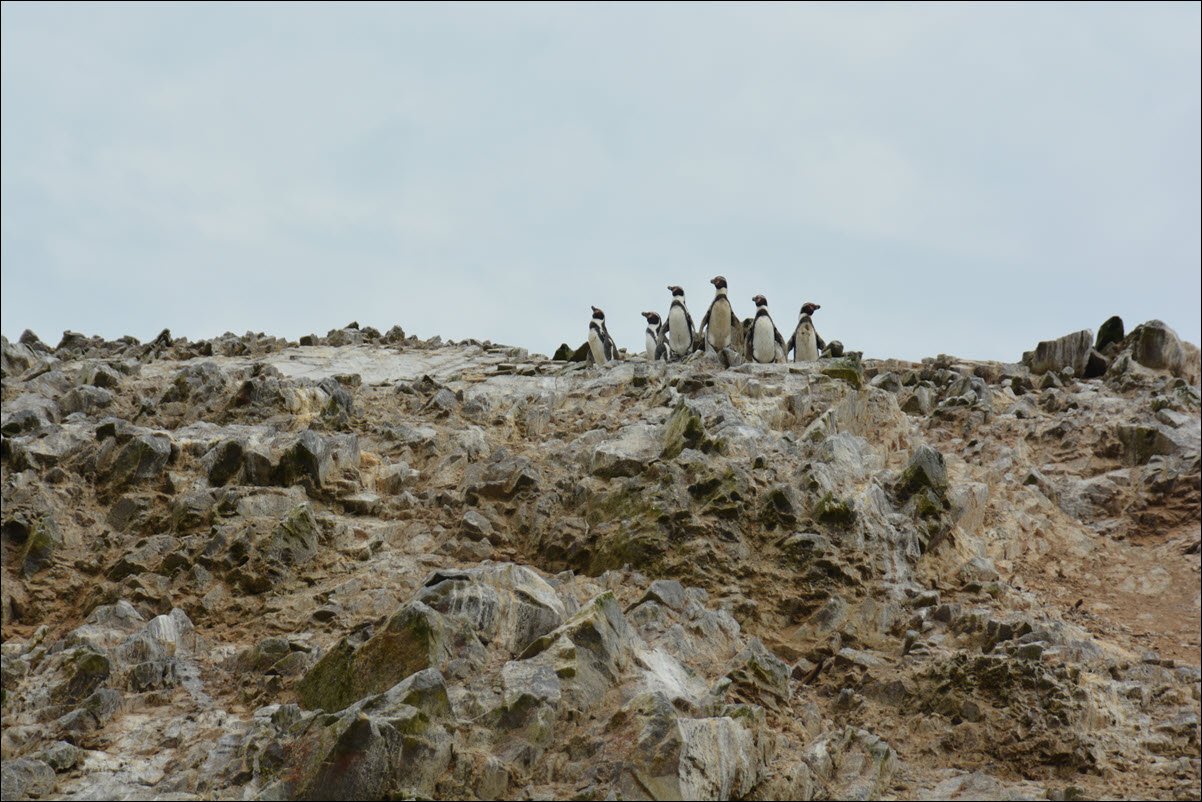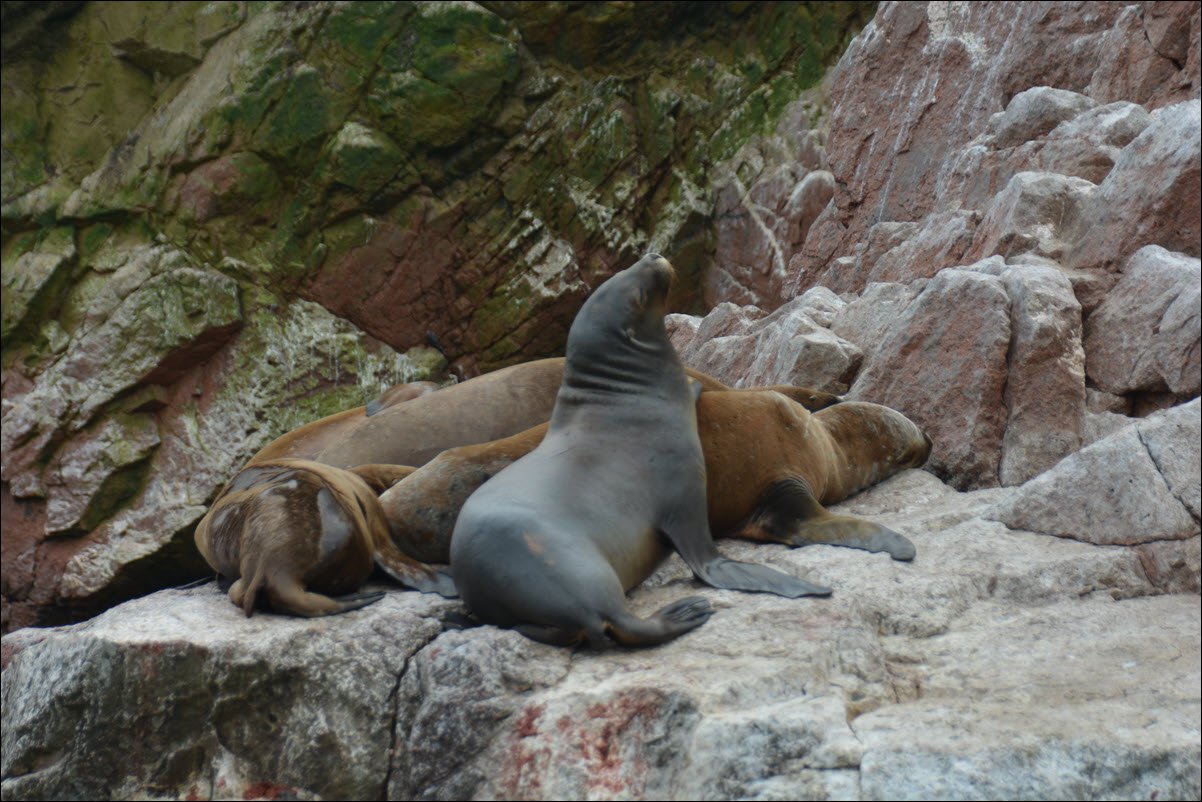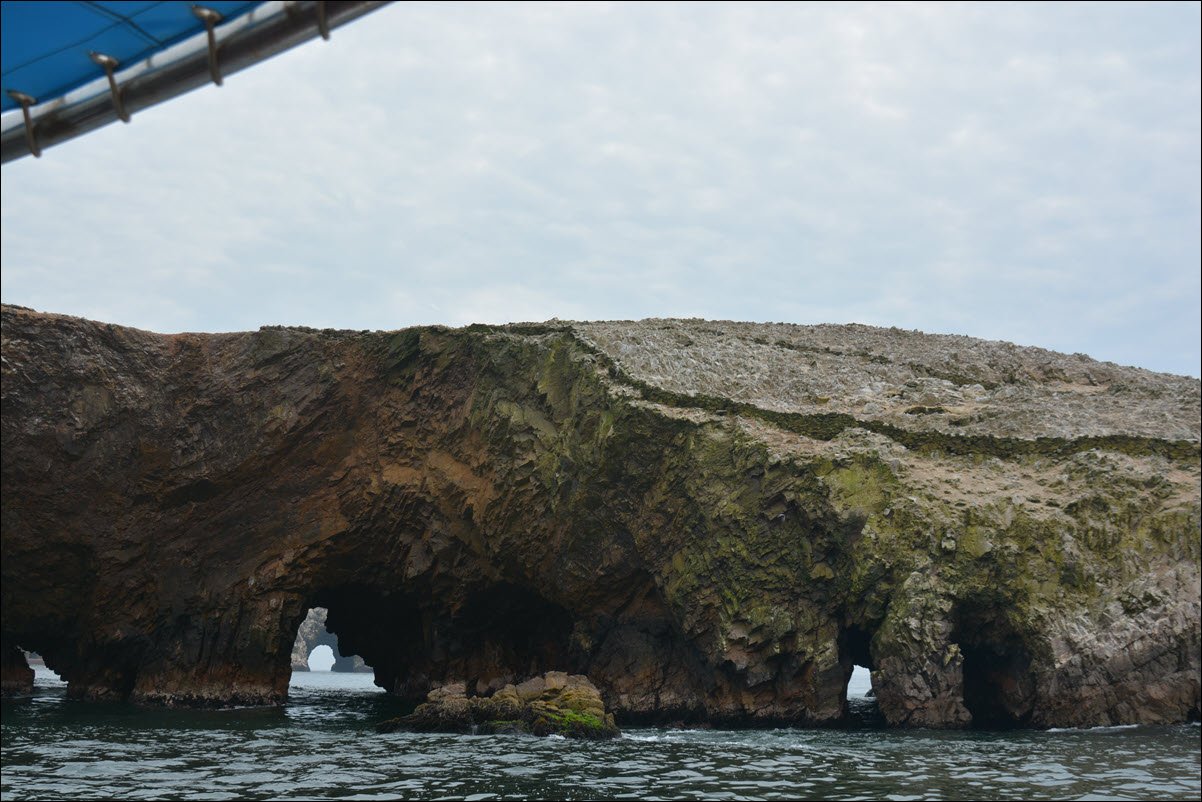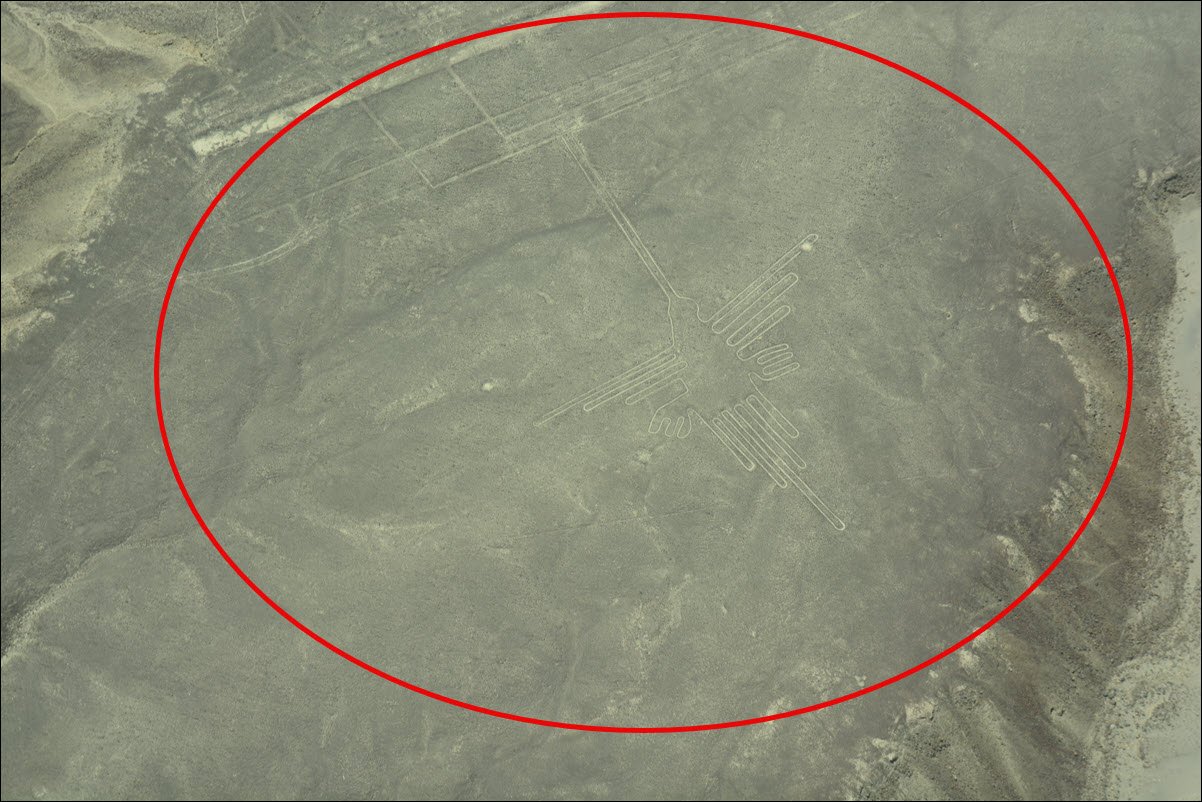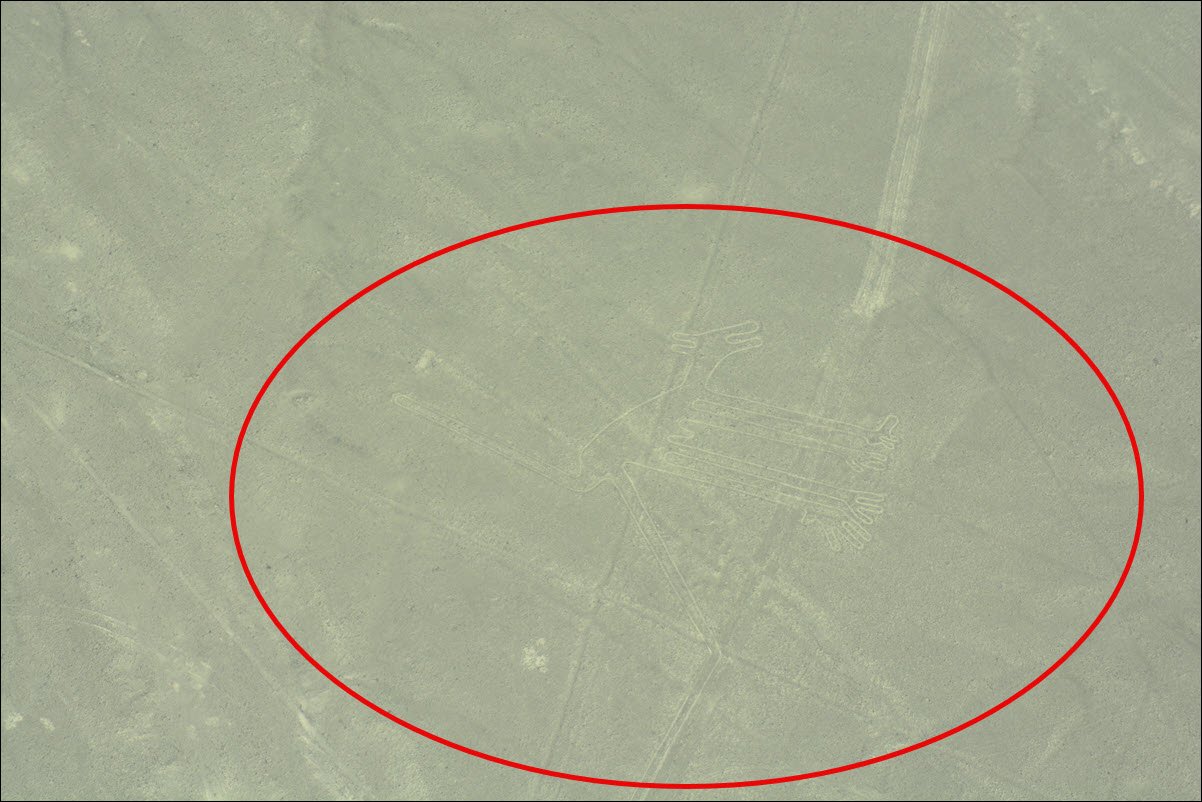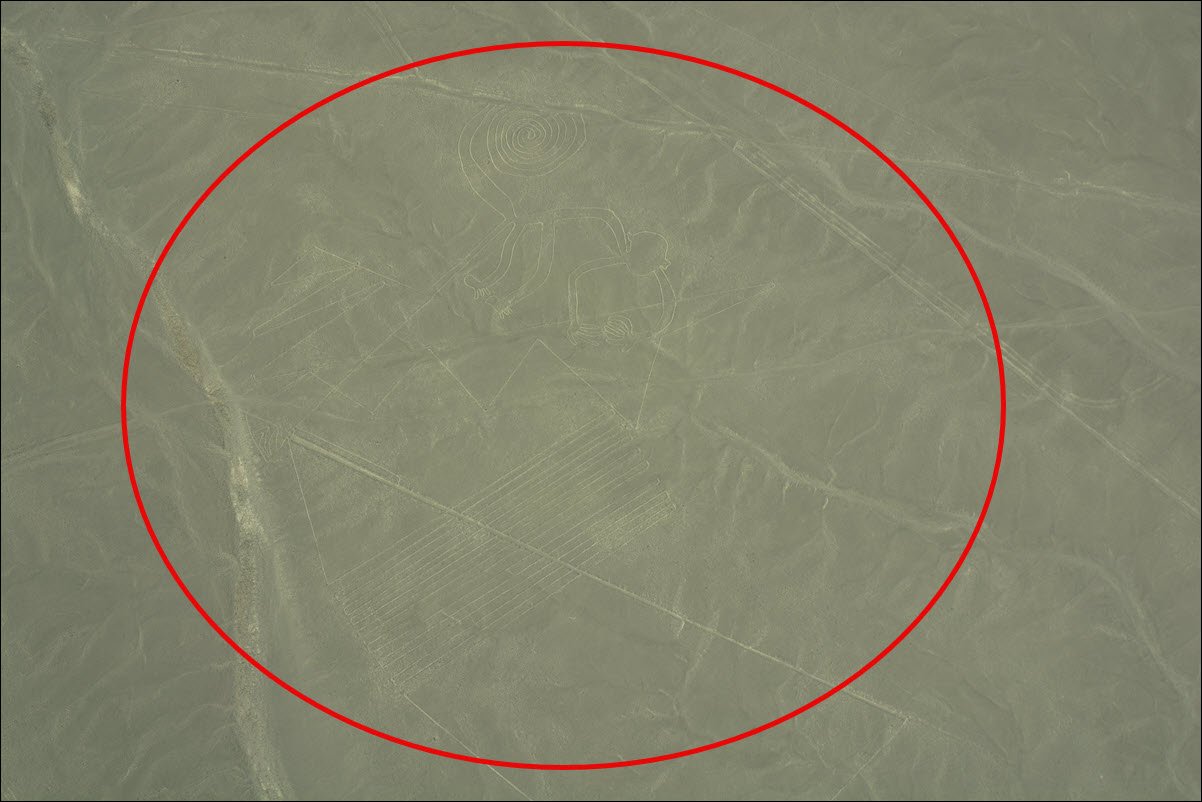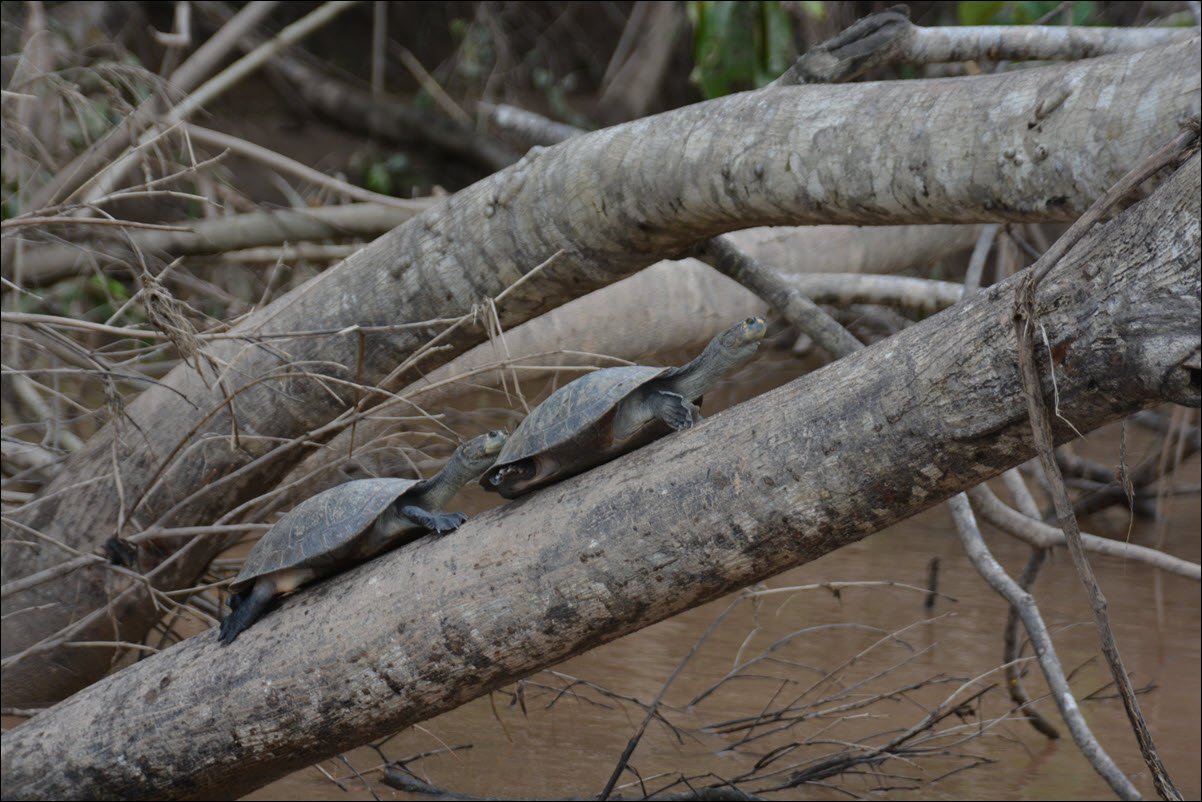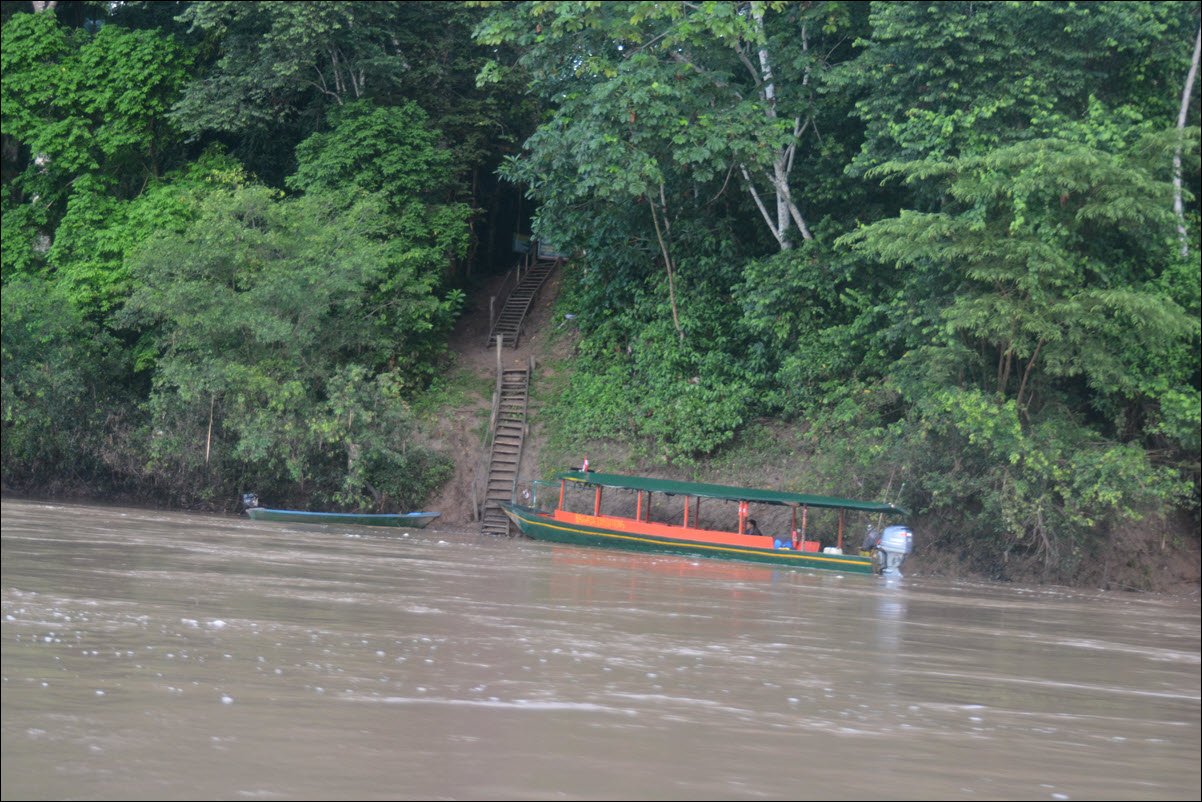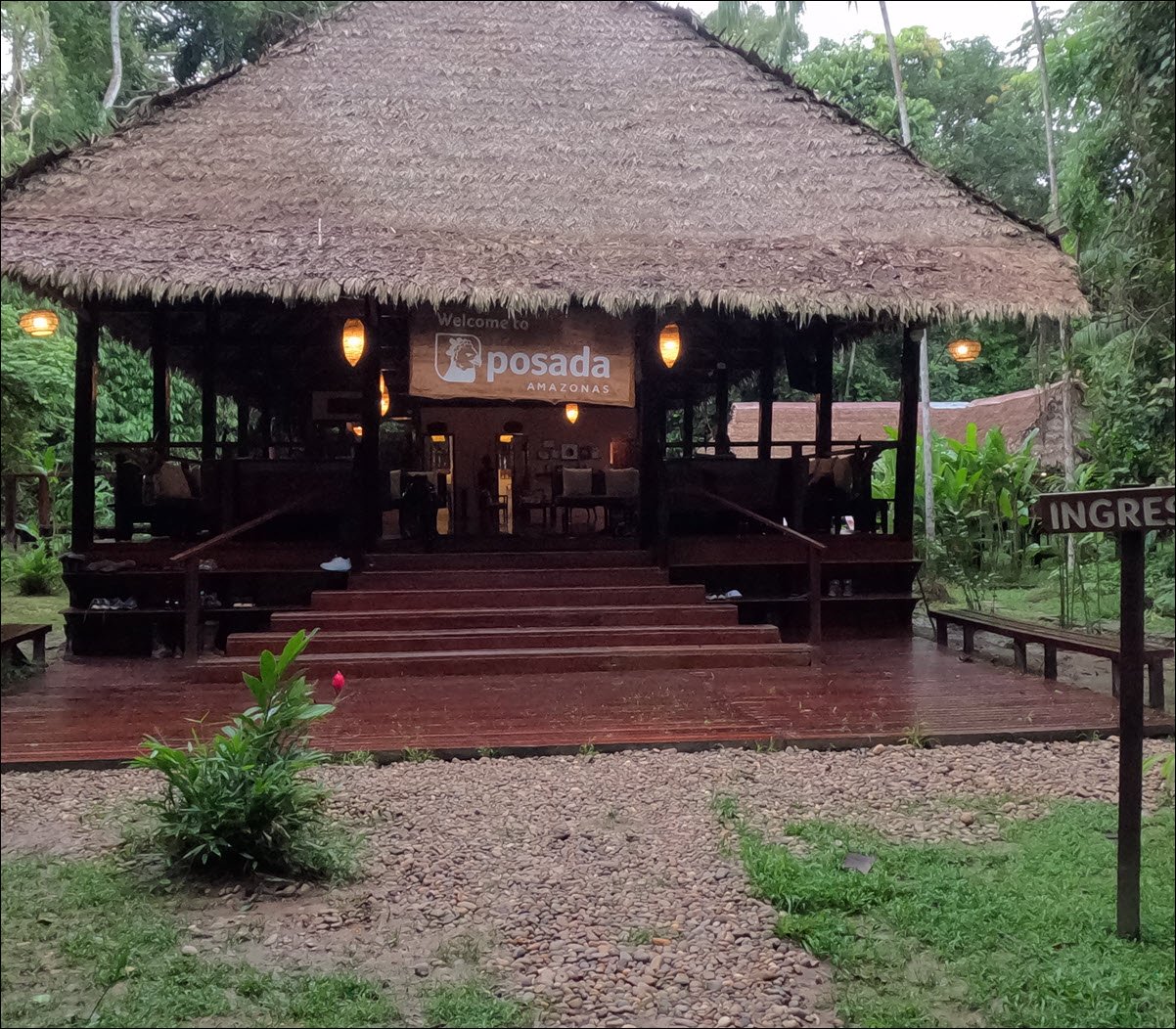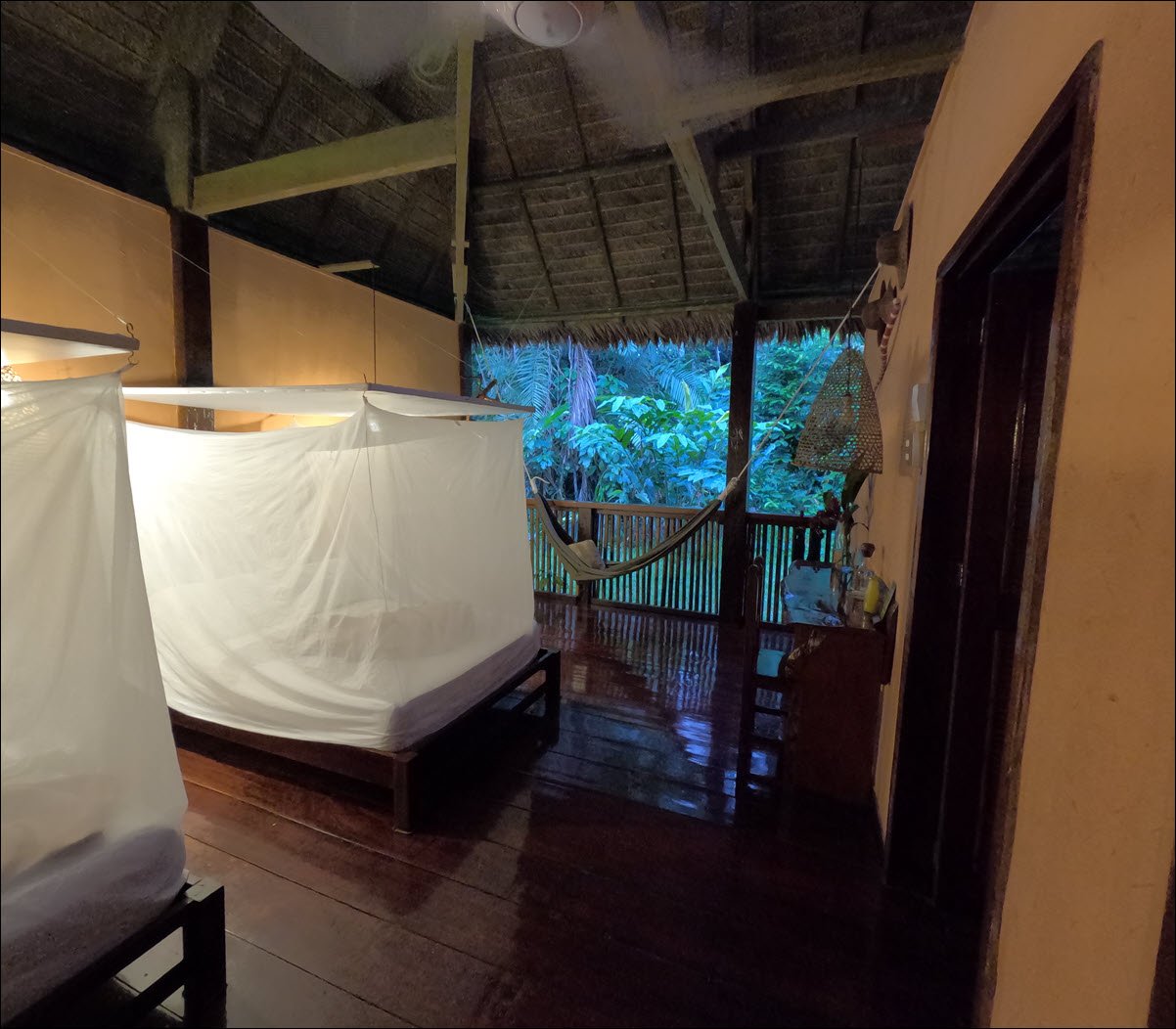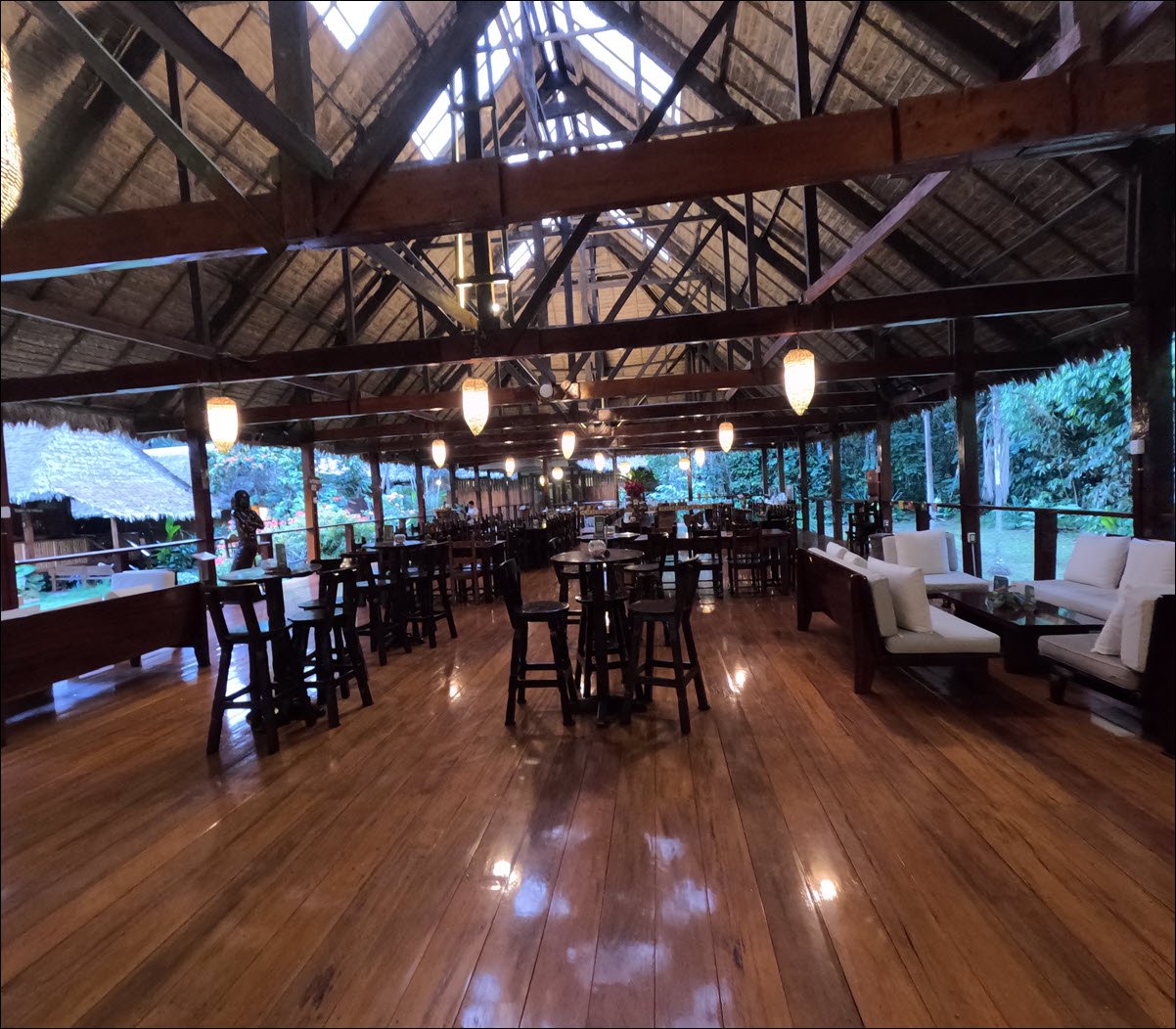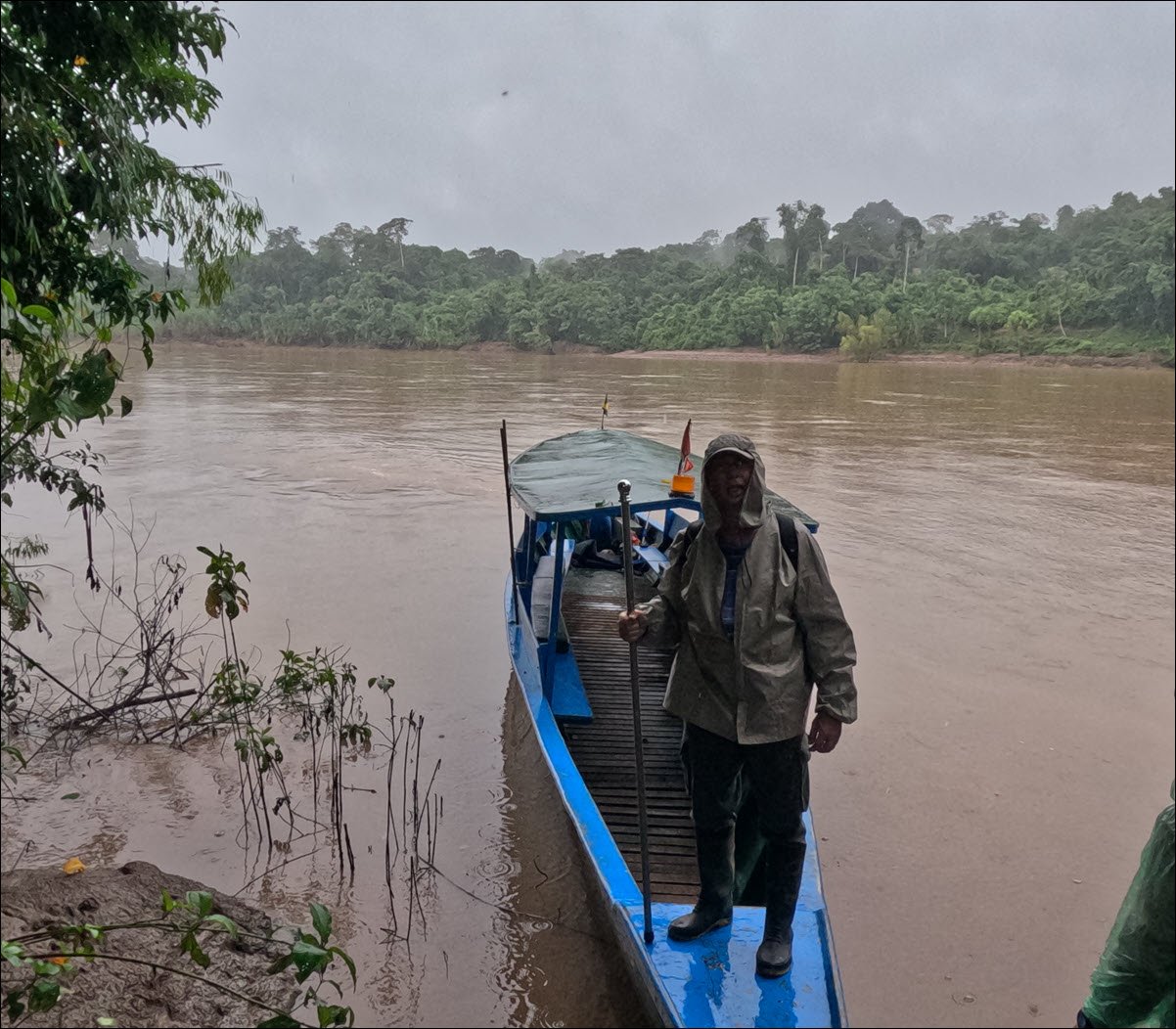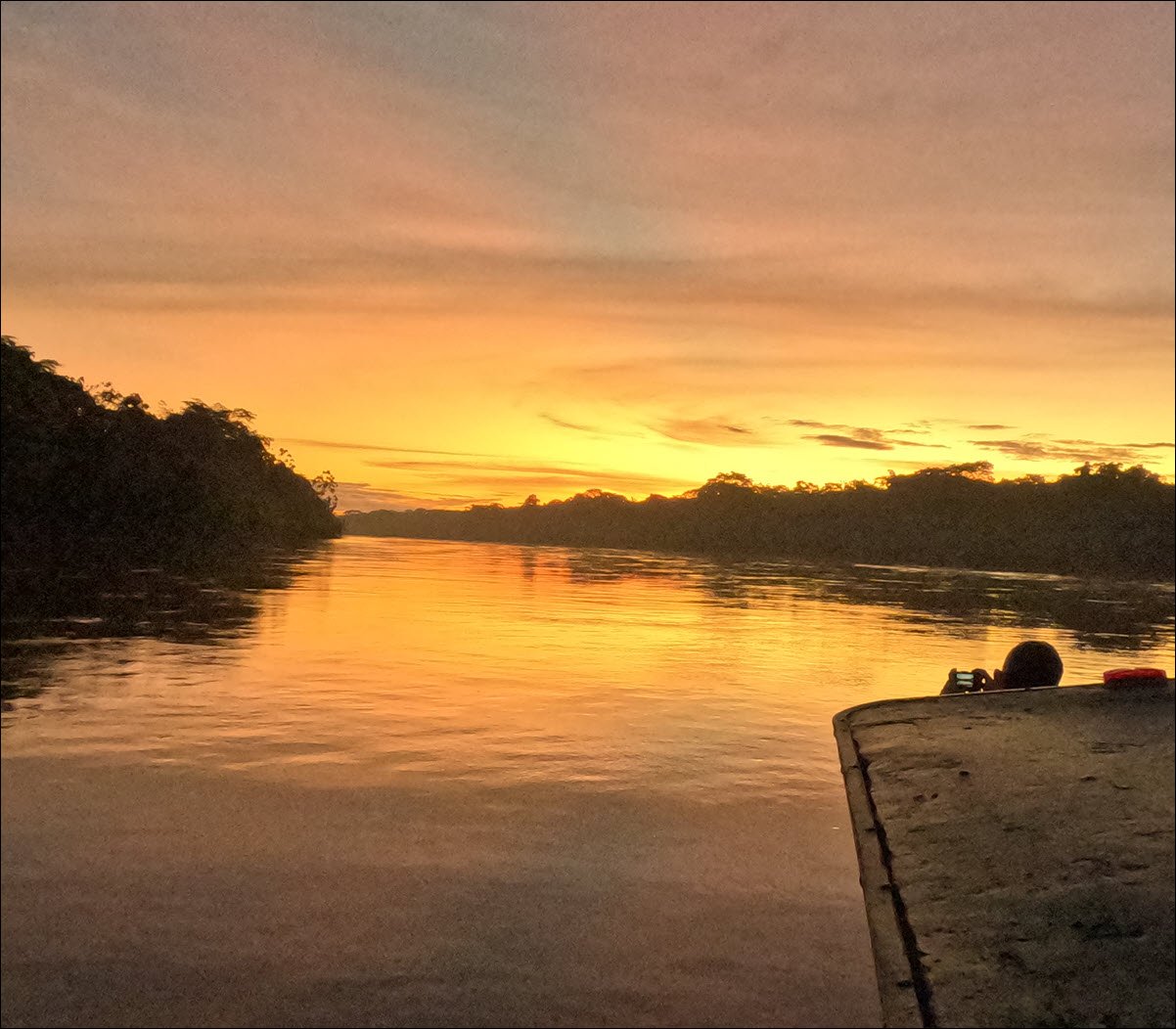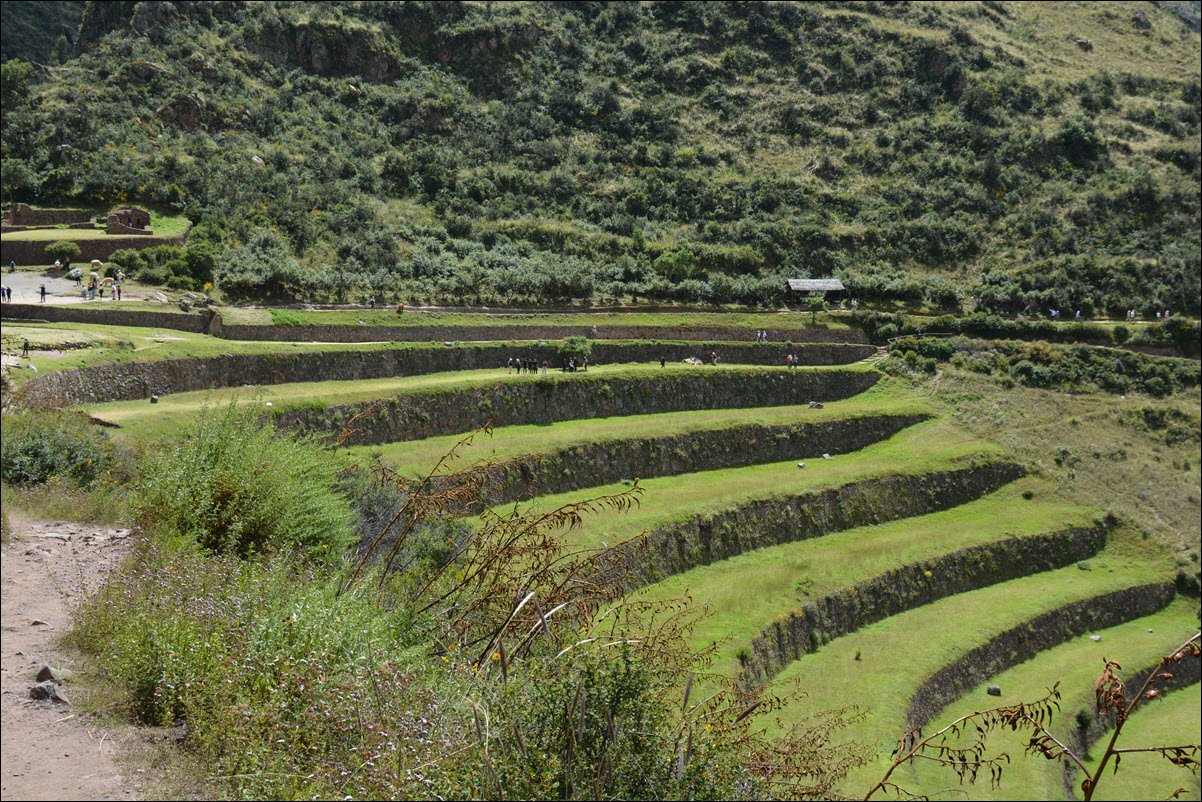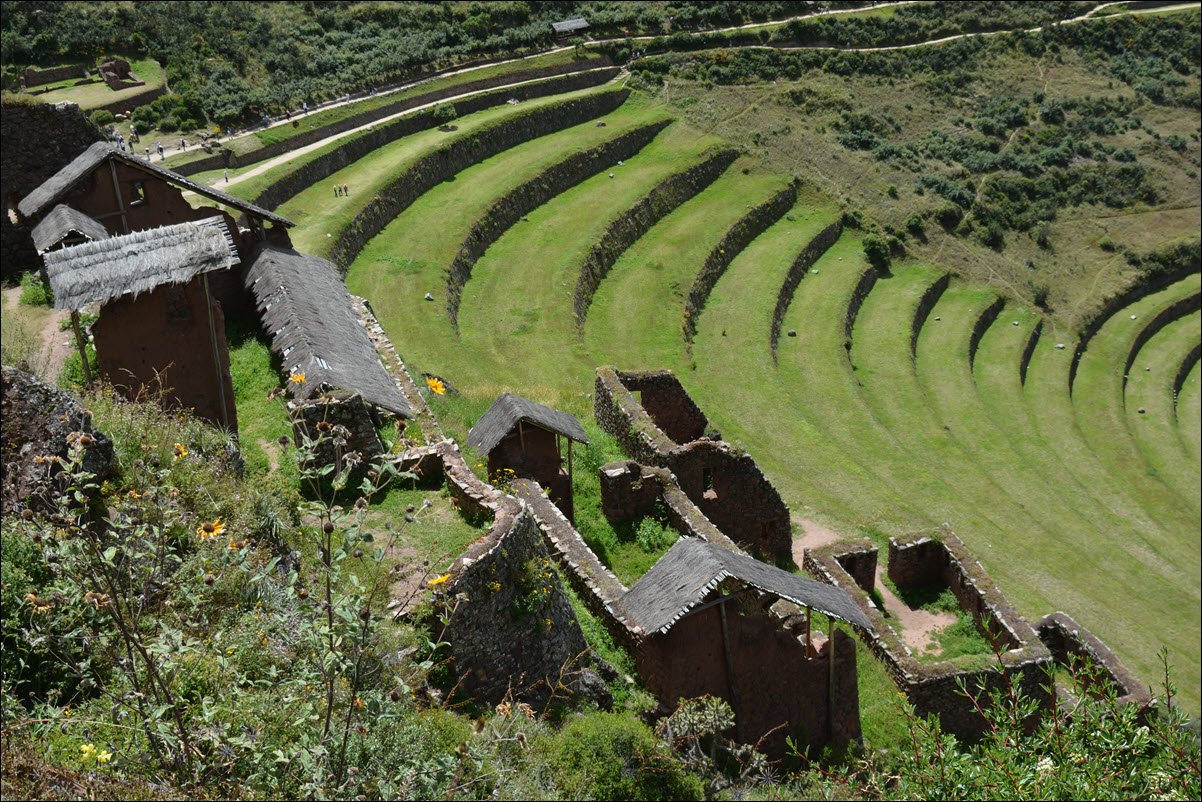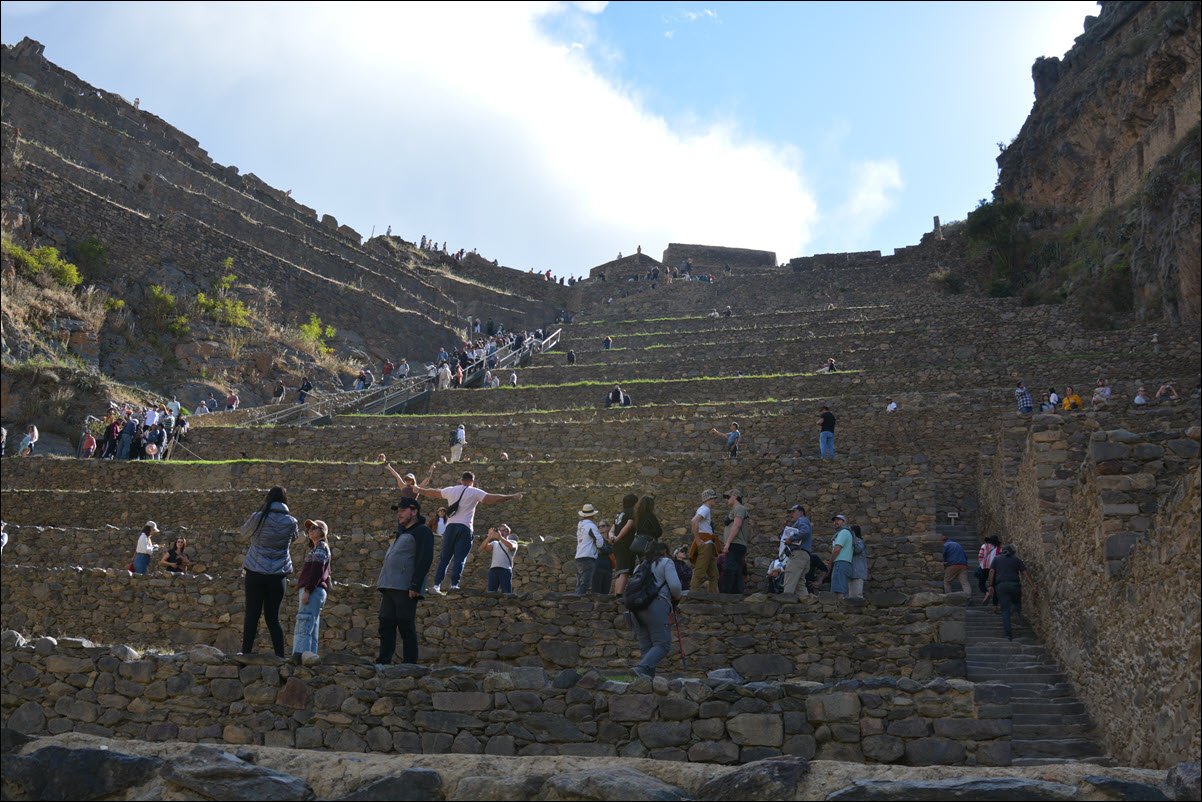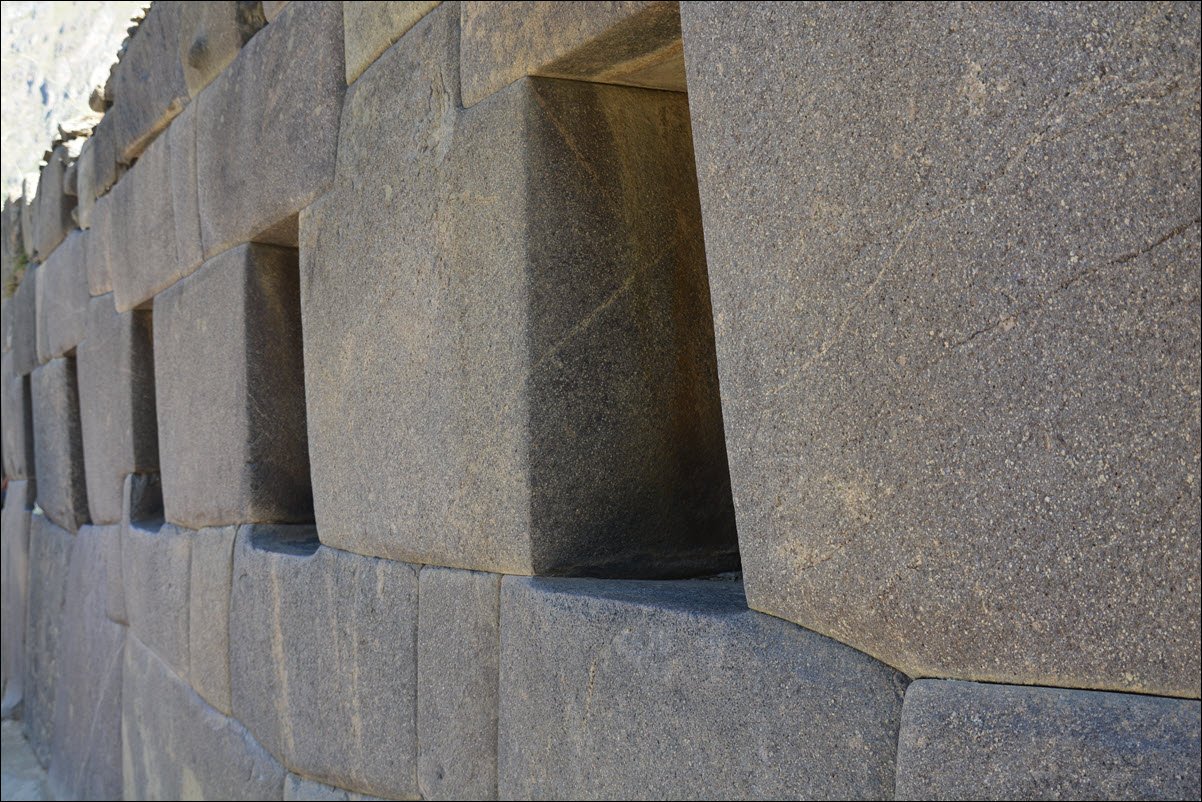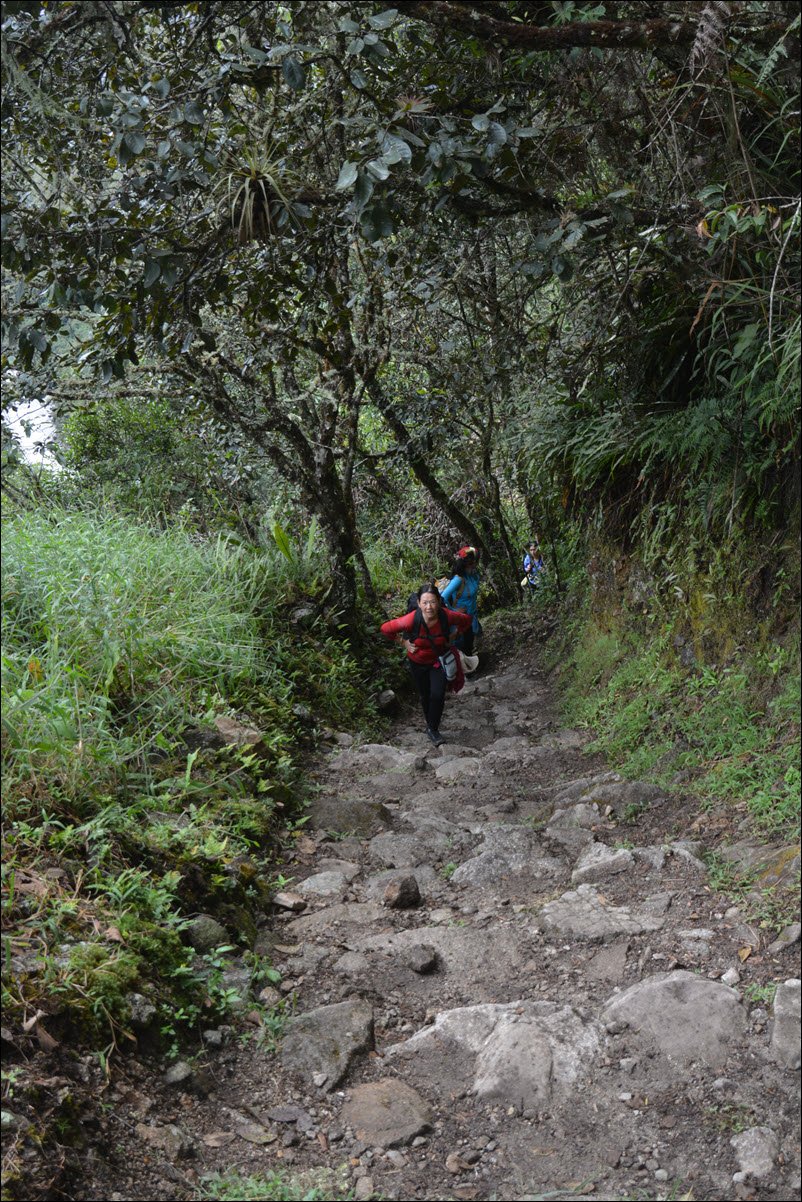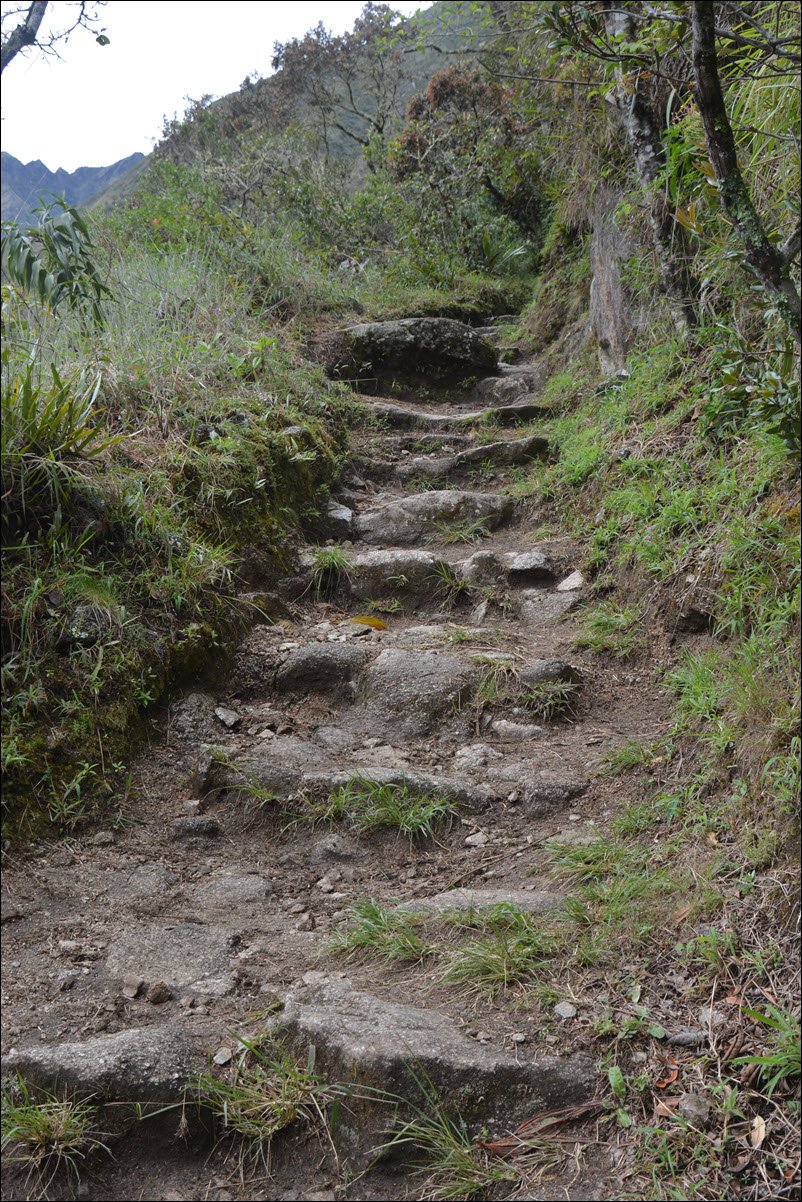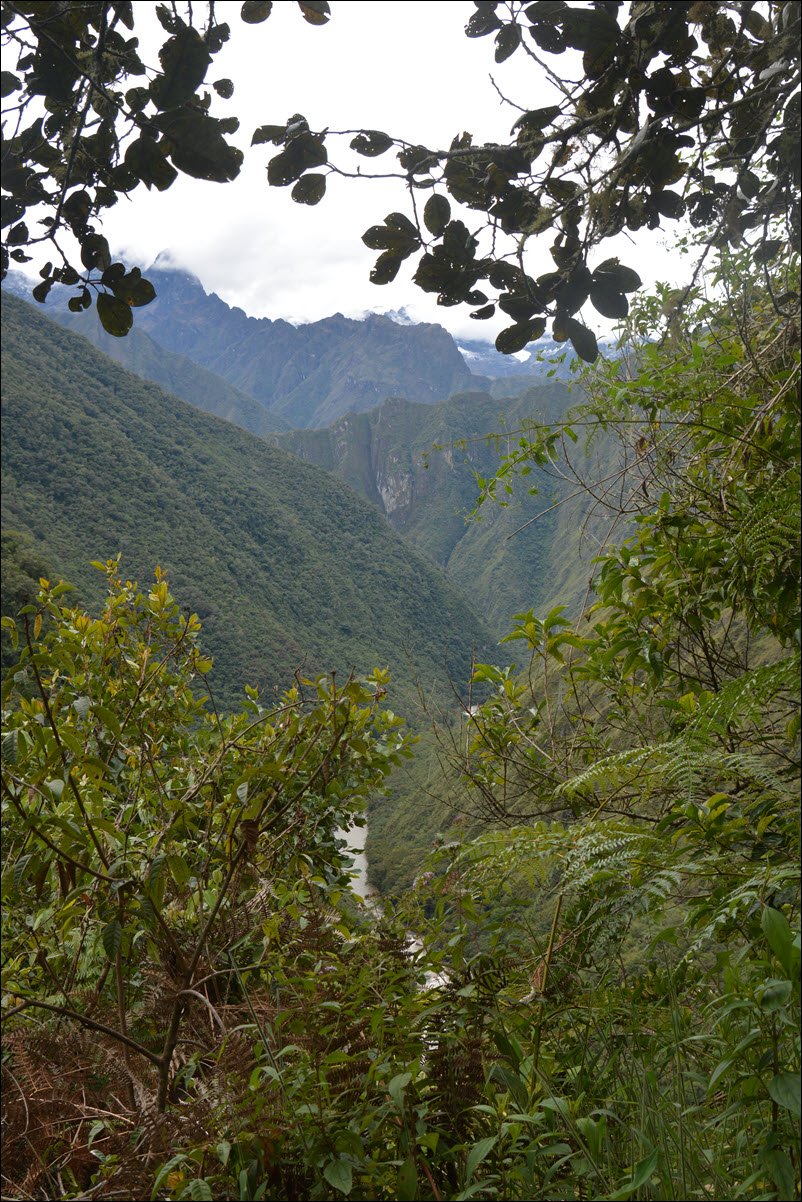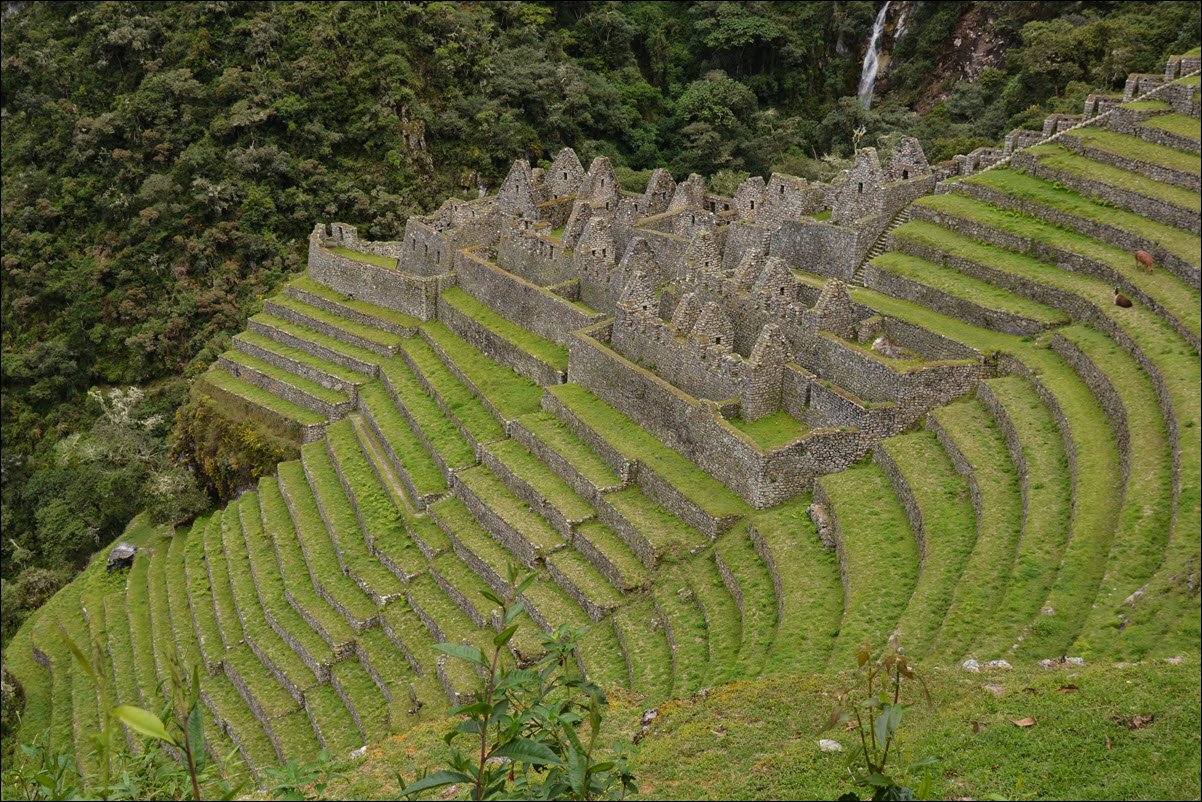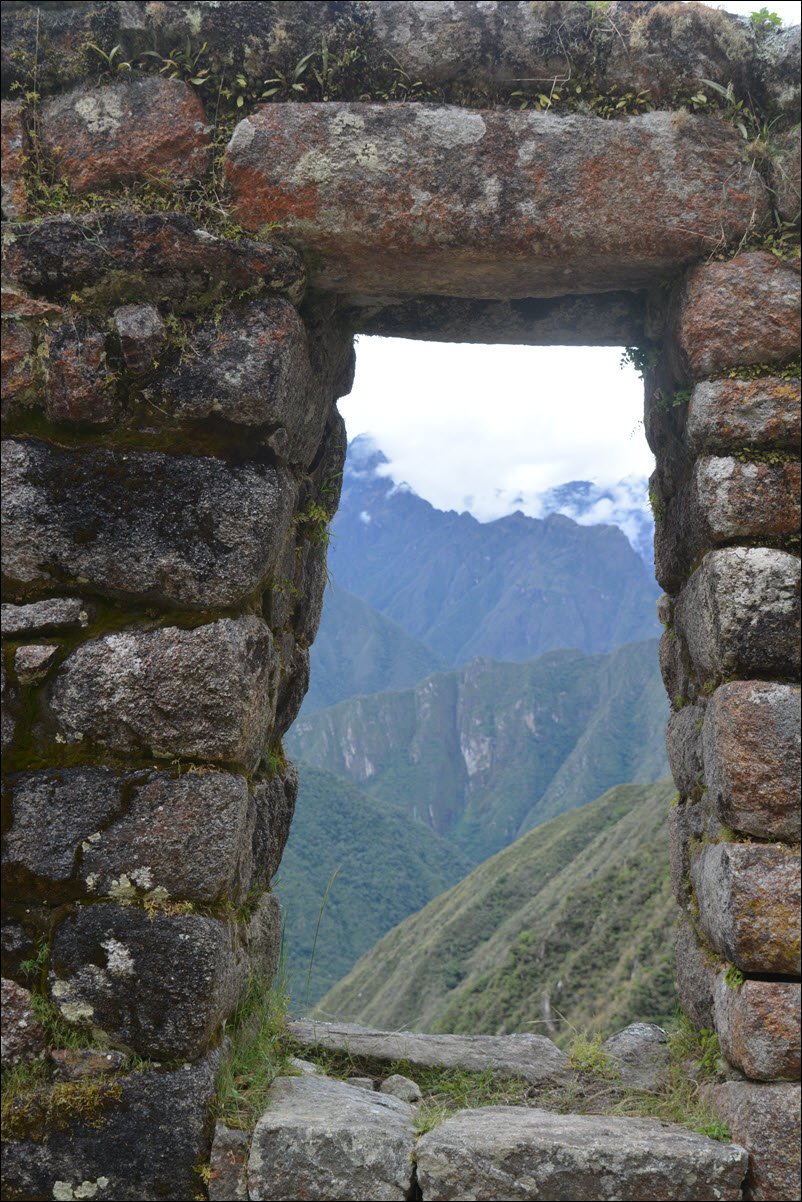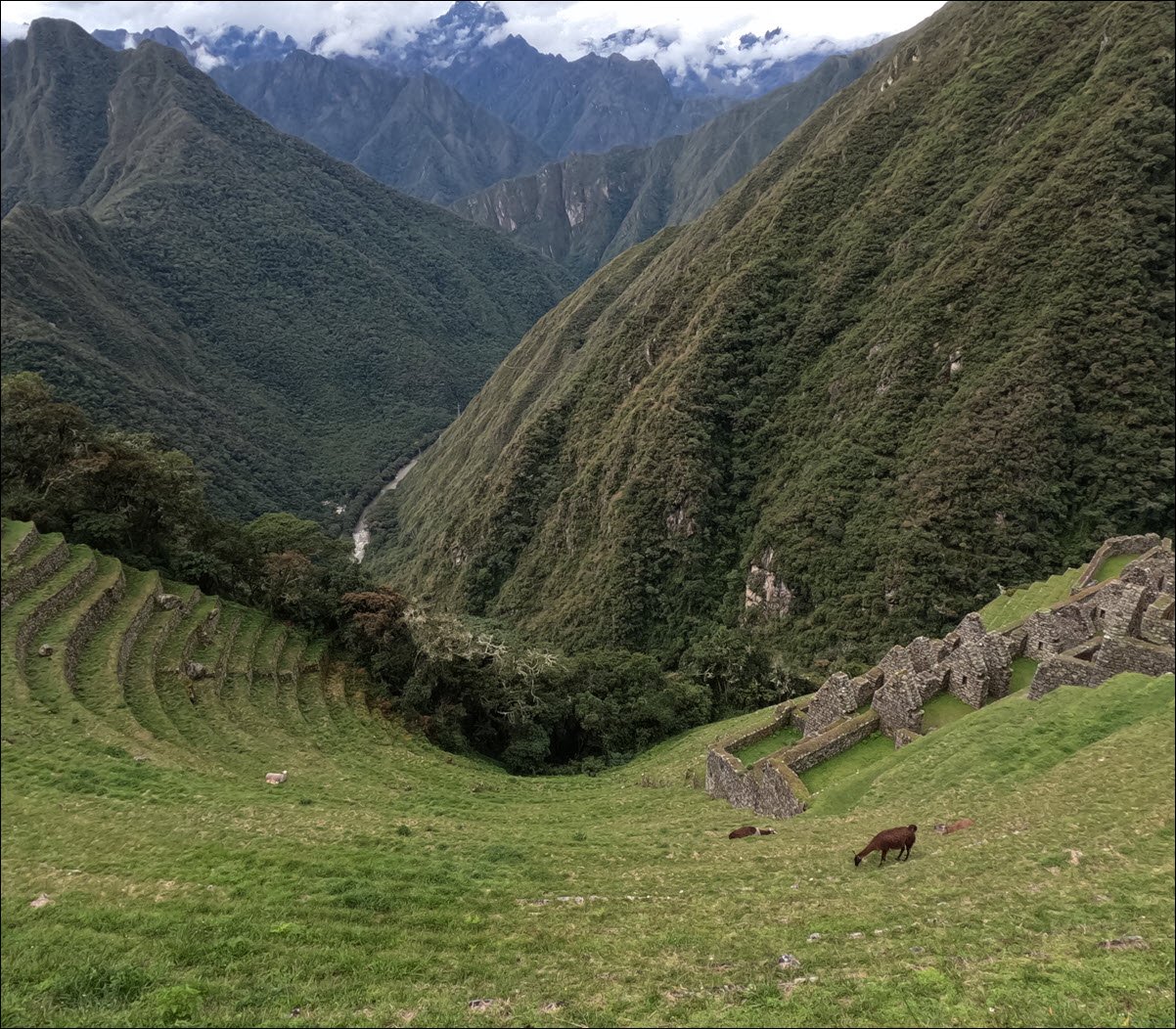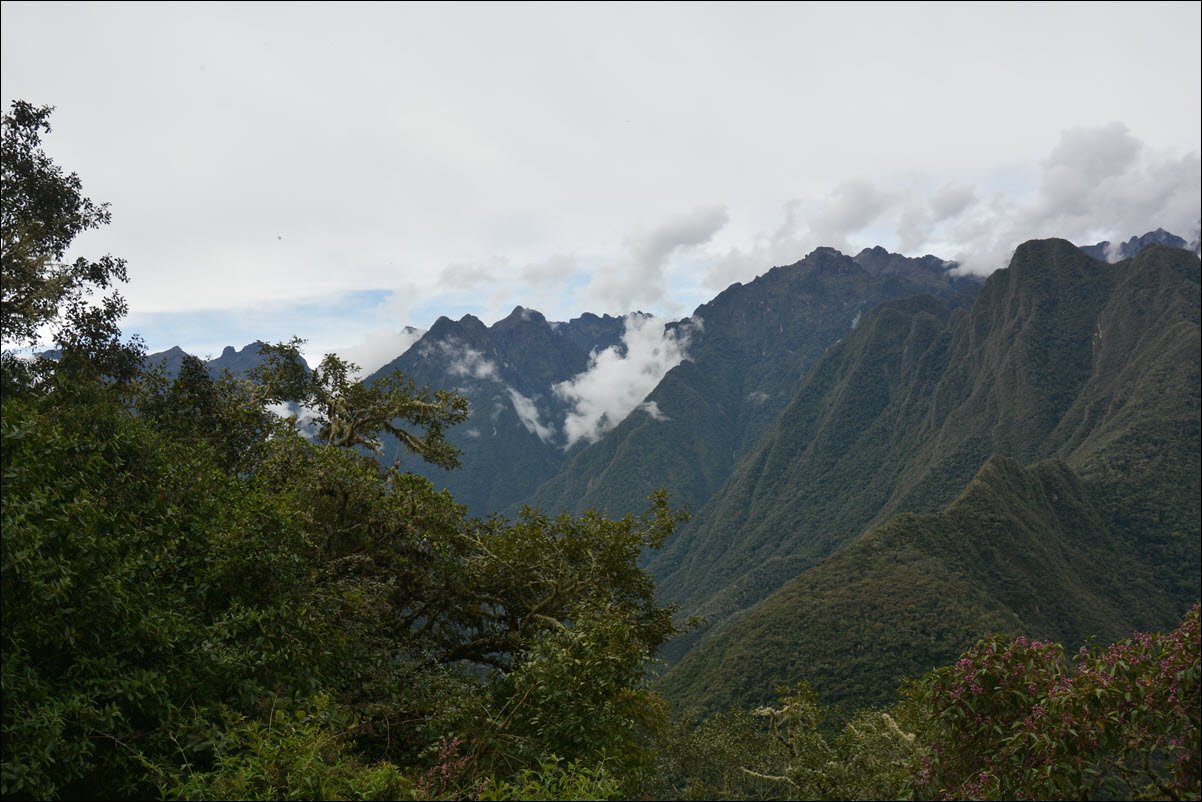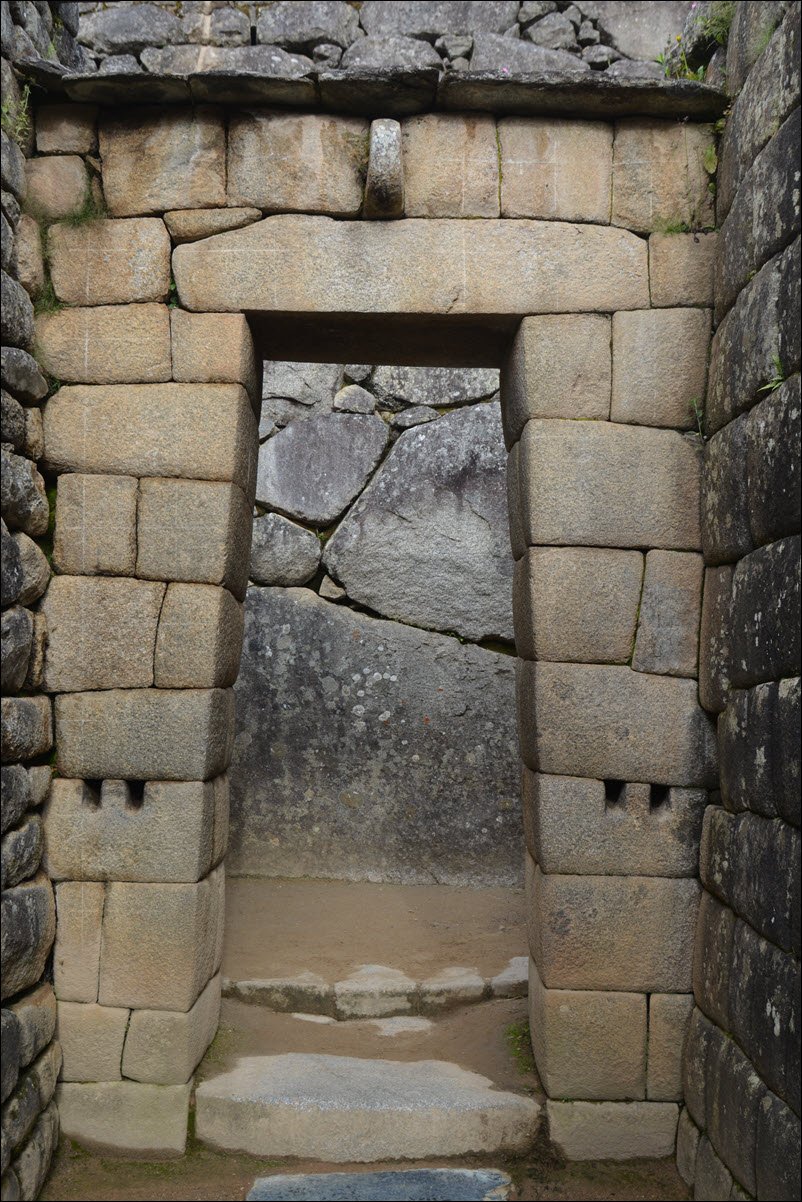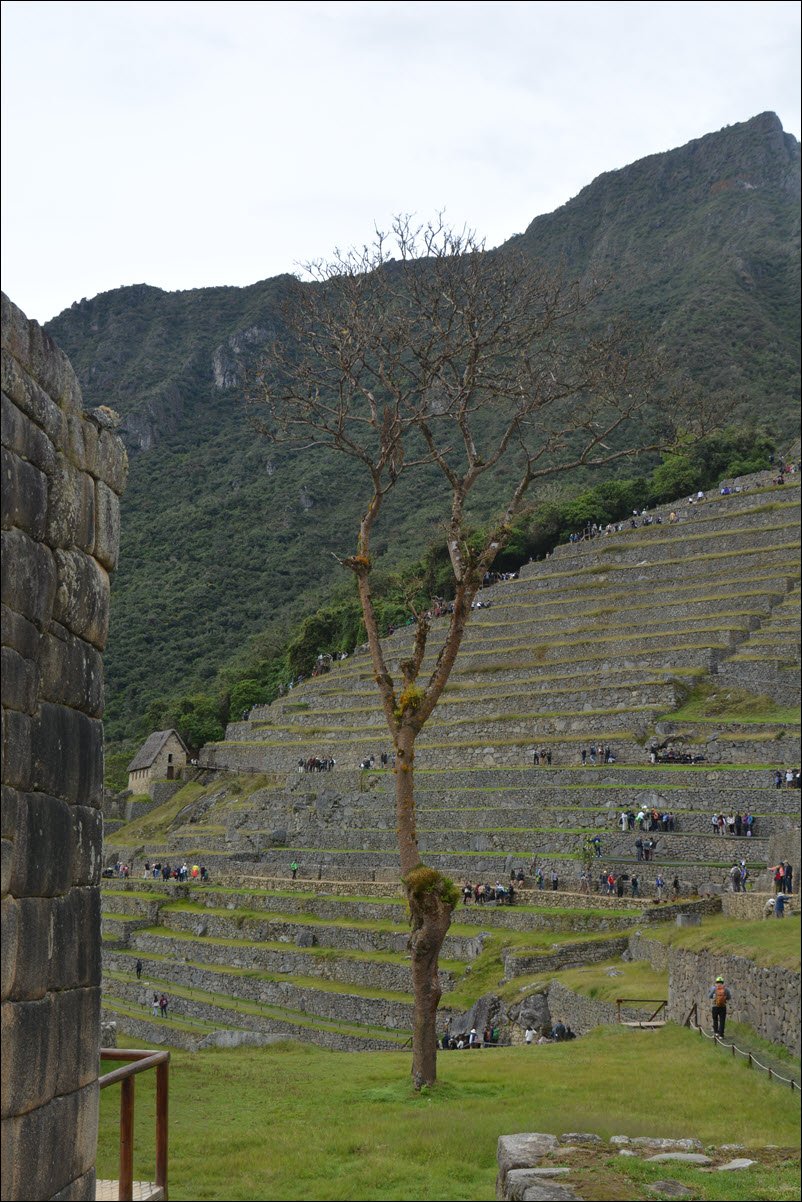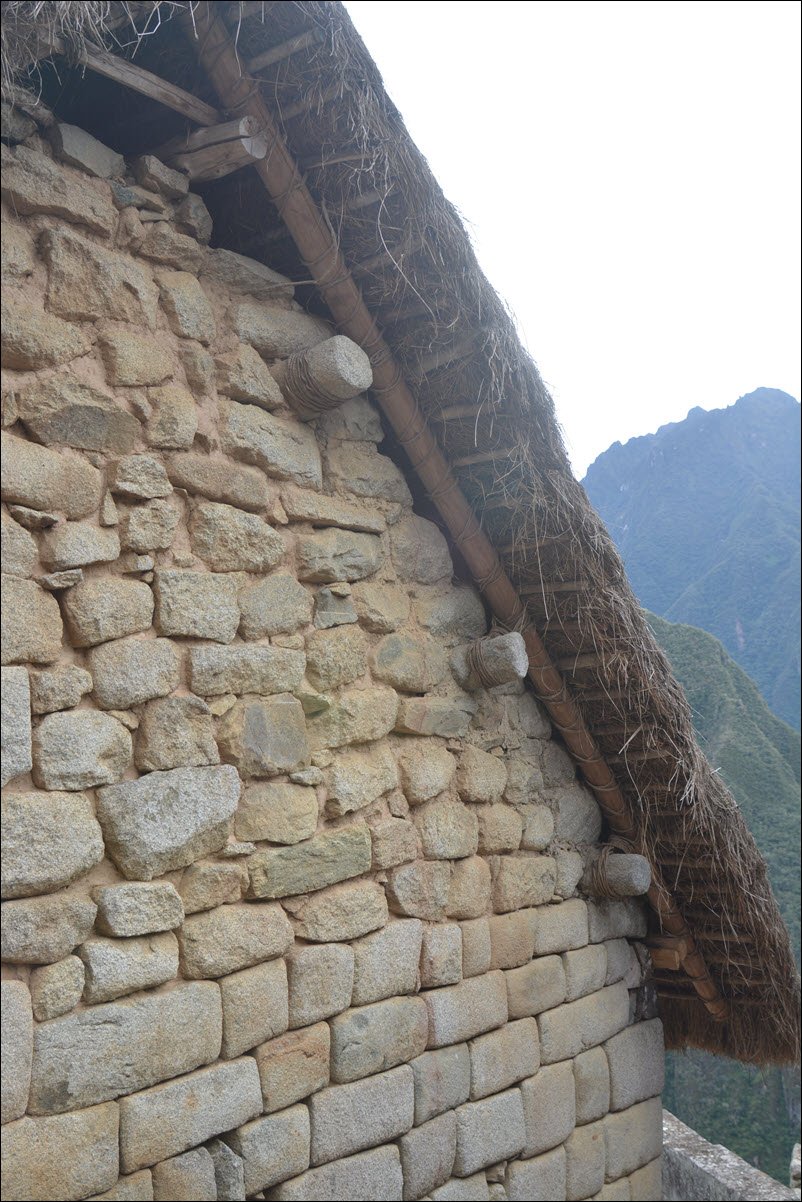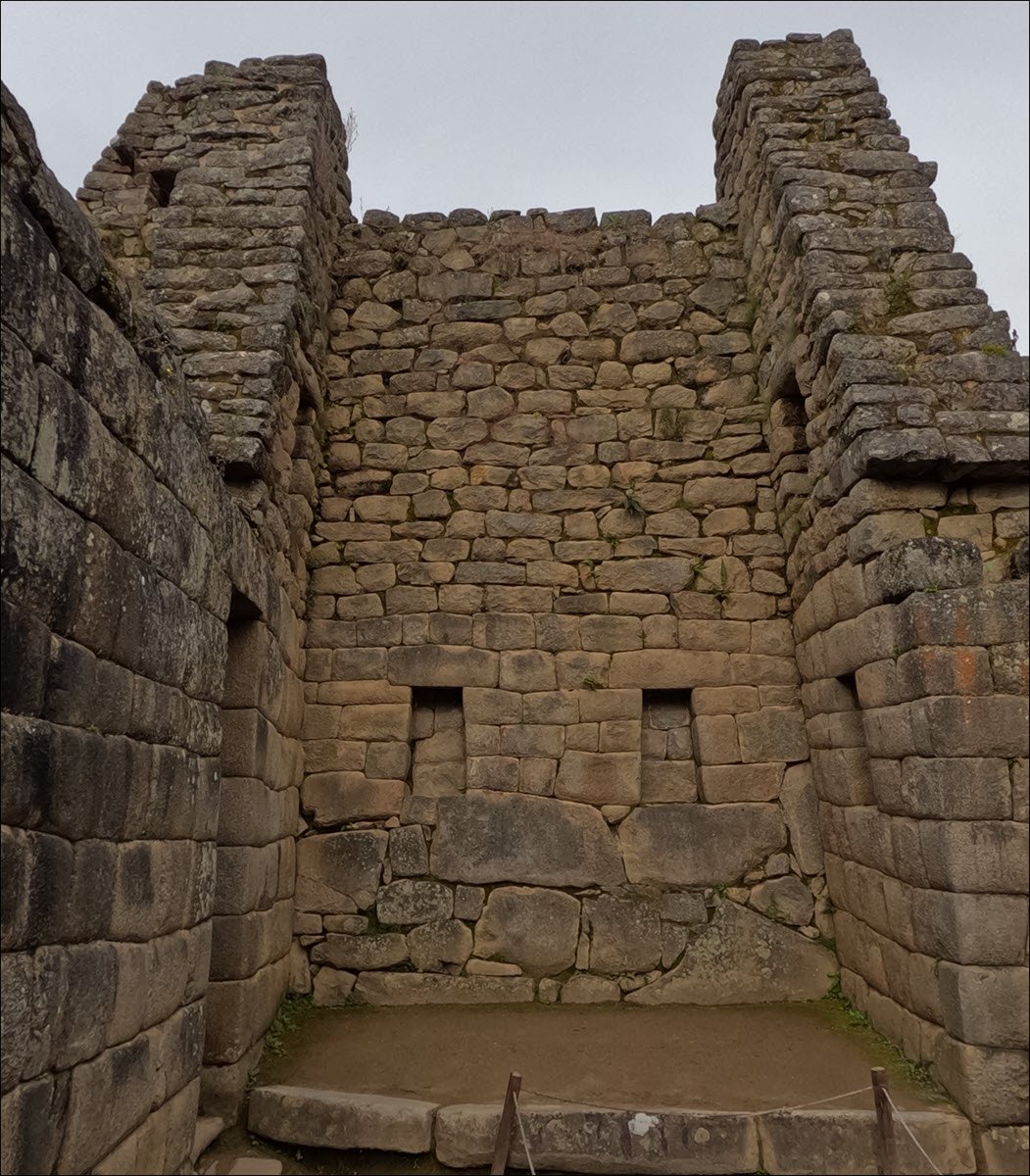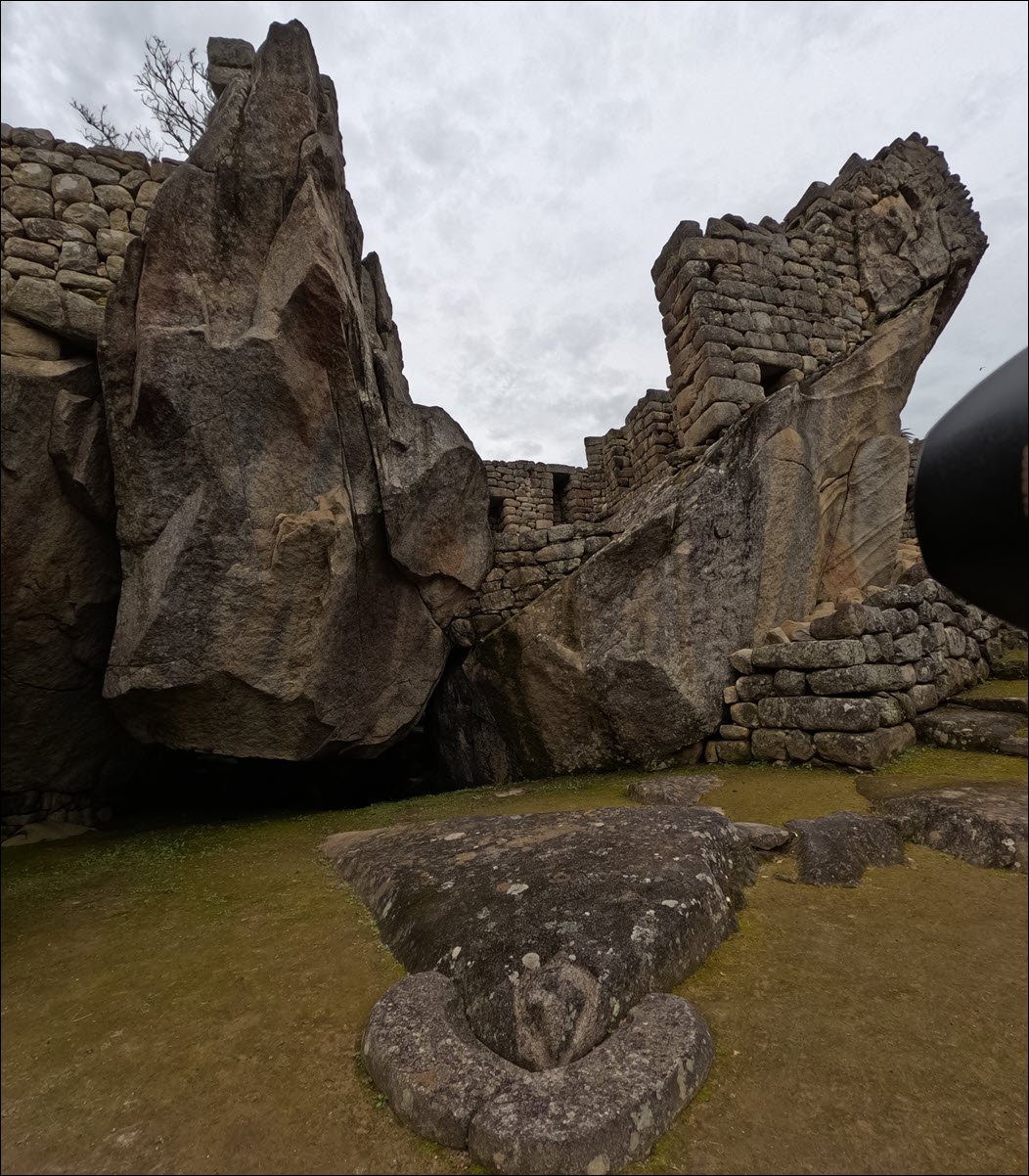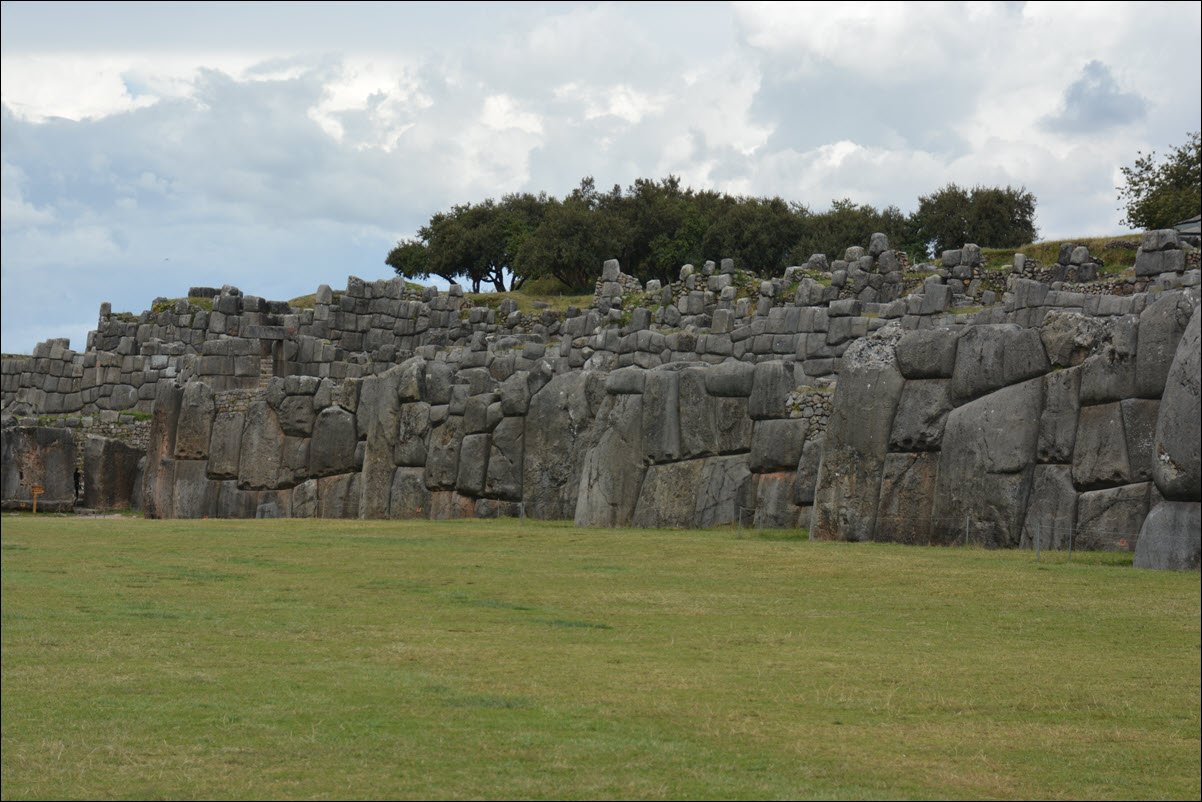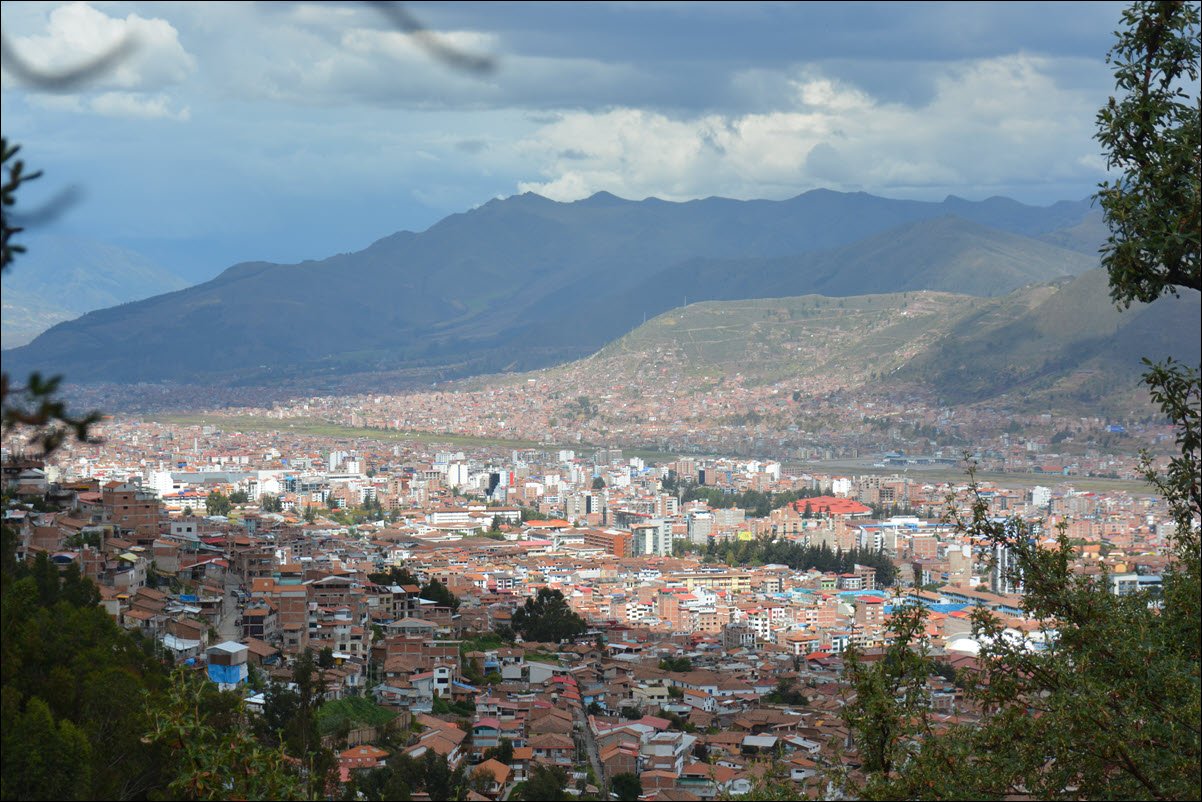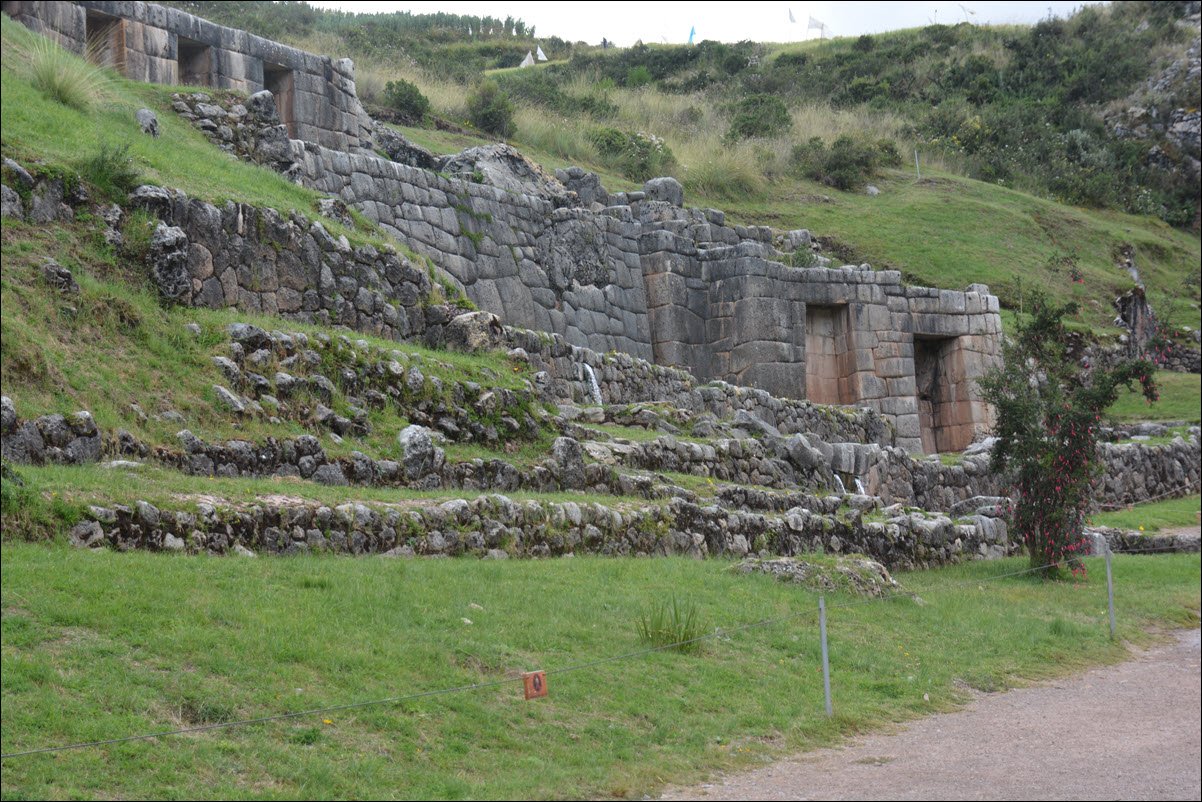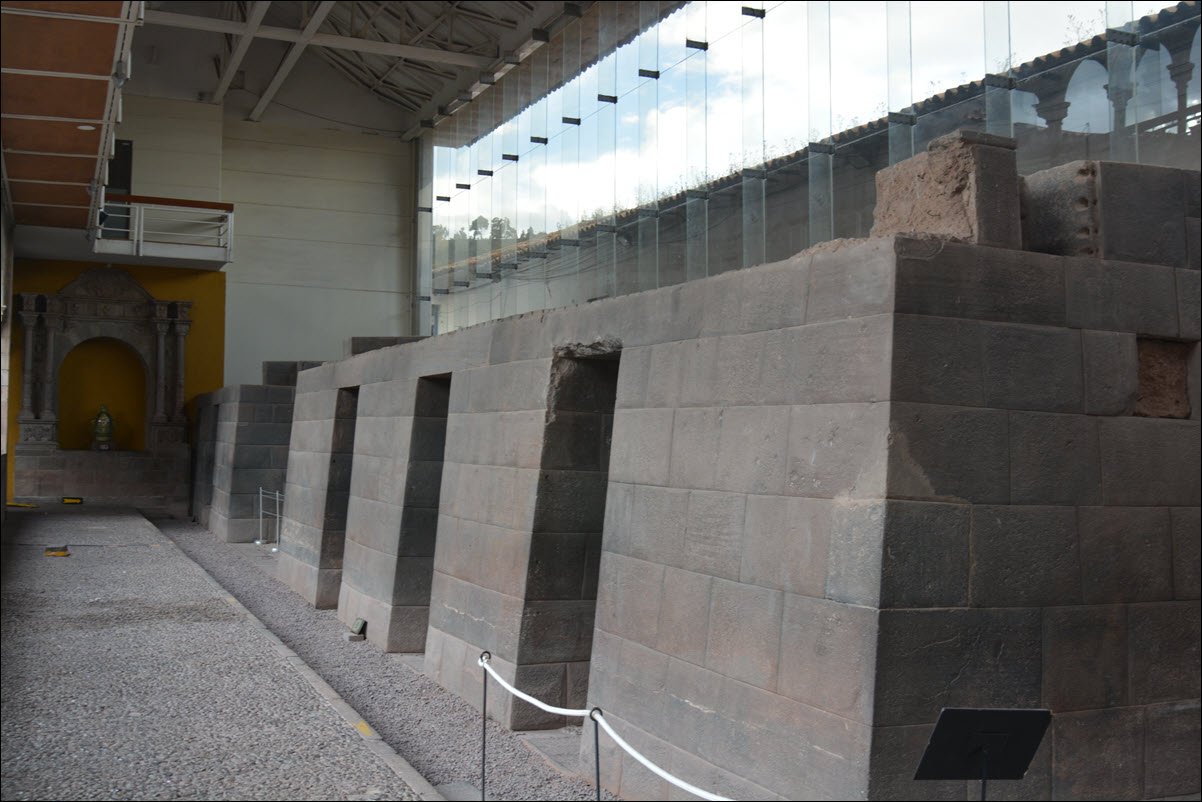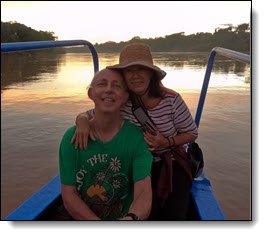
Estimated reading time: 51 minutes
Winnie and I recently returned from two-weeks of cross-country adventures in Peru. During our trip we took a boat ride around marine sanctuary islands; rode a dune buggy in sand dunes; flew over hard desert to view the lines of Nazca; spent three nights in a jungle lodge keeping our snacks locked away safe from monkeys; hiked a portion of the Inca trail between Cuzco and Machu Picchu; and toured a number of Incan archeological sites. We also drove over an 18,000-foot mountain pass; viewed Lake Titicaca; got altitude sickness; and (briefly) lost my luggage to a Peruvian airline. It was quite the trip.
Prelude
Back in 1979 on my first submarine, the USS Scamp (SSN 588), we made a five-month South American UNITAS cruise, with that particular event titled UNITAS XIX (19). In 1979 it was in fact a “cocktail cruise,” as we spent a few days playing naval exercises with a given host nation, then several days in port with orders to “have fun.” Which, I can assure my readers, us sailors did in fact have fun.
Then on to the next host country.
Of the eight nations we visited, I felt Peru was the most magical. We were in Lima long enough for me to take an offered three-day/two-night trip up to Cuzco and visit the archeological site of Machu Picchu. It was a teaser, and I left Peru promising myself I’d someday return for a longer visit. It took forty-six years, but I finally got a return visit and Winnie came with me. So, a double win.
I’d actually spent the past couple of years researching travel in Peru, and learned Peru has a strict permit system limiting access to many of the archeological sites including the Inca Trail. So, we made reservations and paid our deposit for our April trip back in November 2024. We’d arranged a package tour with the in-country outfitter Alpaca Expeditions. They seemed to offer a nice assortment of tour packages and were easy to deal with via WhatsApp.
The Itinerary
Because I don’t think I’ll ever have a chance to get back to Peru, I wanted to take in all the sights and adventures (The Inca Trail!) on this trip I’ve read about and dreamed of over the years. After a lot of negotiating, Winnie and I booked reservations for the following tours:
- The Nazca Lines, including a flight over the Nazca Desert.
- Sandboarding in Huacachina
- Amazon Jungle
- Stay at a Tambopata River Eco-lodge
- Andes Mountains
- Exploring the archeological sites between Cuzco and Ollantaytambo
- One-day trek on the Inca Trail between Cuzco and Machu Picchu
- Visit to Machu Picchu
- One-day trek to Rainbow Mountain
- Lake Titicaca Visit
- One night stay in a Bed and Breakfast (BnB) on a floating island
- Day Visit to another island in Lake Titicaca
It was an intense itinerary, but I thought we could handle it. This was my shot to see Peru, and Winnie was agreeable.
The Beginning
Winnie and I flew out from Charlotte with connections via Miami, then into Lima, Peru. We arrived late evening and had arranged for the next day to be a “free day,” to explore a little of the city. After our first “free day,” we had a pretty packed itinerary.
Our hotel was in the Miraflores district of Lima, just a few blocks from the coastal cliffs and beaches. We spent the day walking around town and had dinner in a nice restaurant to celebrate the start of our adventure. We also converted dollars into Peruvian Nuevo Sols (New Sols), so we’d have spending cash over the next two weeks.
Ballestas Islands, Desert Sandboarding, and Nazca
We were picked up at our hotel bright and early the next morning (5:00AM) by our tour guides. We drove south in a small van accompanied by one other couple. First stop was Paracas and a two-hour sightseeing boat ride around the Ballestas Islands. After the boat ride, we drove further south then stopped for lunch at a vineyard. The lunch stop included a winemaking demonstration and the famous national drink “Pisco.” The demonstration included a wine-tasting of these drinks.
For More Images of the Ballestas Islands, See My Gallery Page
After this lunch stop, we continued driving south into Huacachina, which is a desert oasis nestled in impressive desert sand dunes. We had a two-hour stop to take a desert dune buggy ride and go “sandboarding”, sliding down sand dunes on specially designed body boards. From here it was several more hours’ drive into the town of Nazca, arriving about 8:00PM. Just enough time for dinner and sleep.
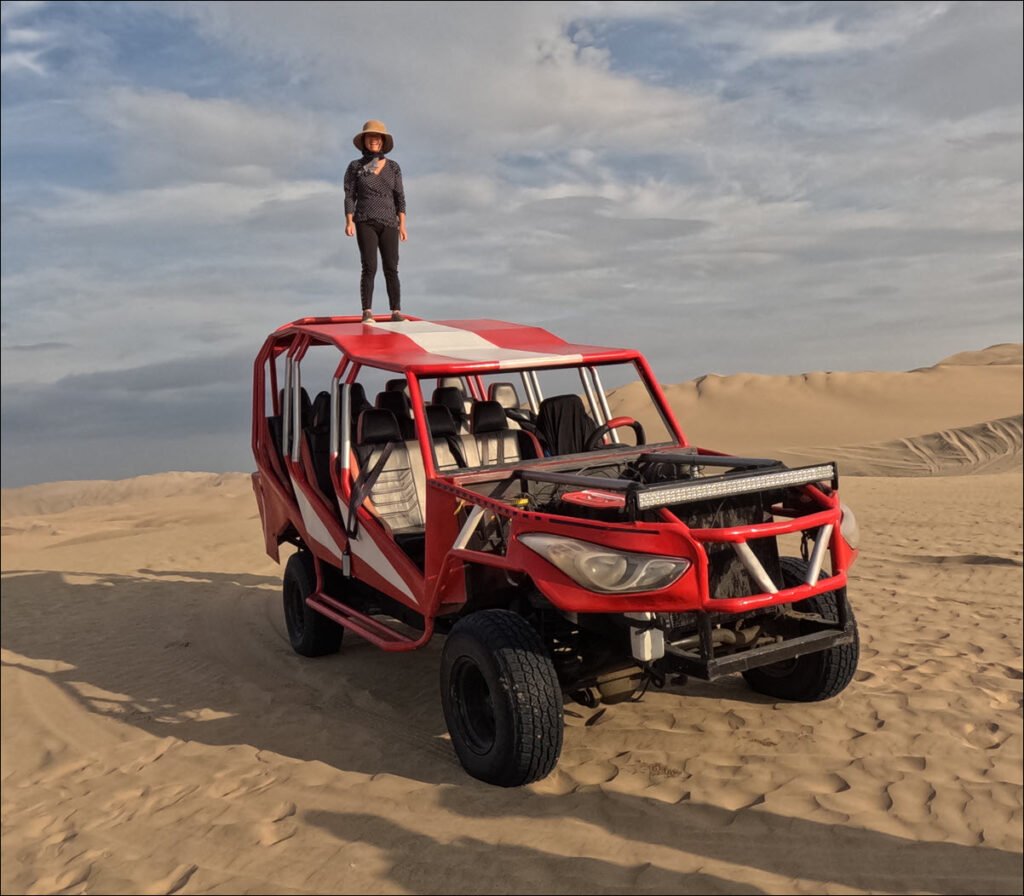
Nazca Lines
Our stop in the town of Nazca was for a 30-minute plane ride over the famous Nazca Lines. We had several hours the next morning to explore the small town, then were driven to the local airport for our flight.
I first learned about these desert lines in the late 1970s and have read more over the years since. Getting a chance to see them in person was already a big deal for me. Winnie had never previously heard about them, but I could tell she became fascinated as this trip progressed.
The tour planes were eight-seaters; a pilot and co-pilot (who acted as the narrator while we flew) and six passengers. It was the smallest plane I’ve ever flown in. We were all weighed as part of our check-in. I presume seating was based on our weights; another large man and I sat right behind the pilot/copilot, and Winnie along with another tiny lady sat all the way in the back. No matter, we each had our own window and during the too-short flight we had plenty of opportunity for photos.
Our flight took place close to noon, so with the sun high there wasn’t as much contrast as I hoped for to make the lines visible. We flew at 2,600 feet elevation which was plenty high to view the shapes. The pilot was good about swinging around each major image so people on both sides of the plane could see properly.
For More Images of the Nazca Lines, See My Gallery Page
One small fact I learned was that the Transamerica highway literally cuts through the middle of the plains. In fact, the highway cuts right through one of the images (the “Lizard”).
Back To Lima
After our flight, we were herded back into the van for a quick jaunt out to a couple of other archeological sites around Nazca. I learned there was another culture to the north, the Paracas Culture, who also created lines and images in the desert, but used rock instead of digging trenches the way the Nazca culture did.
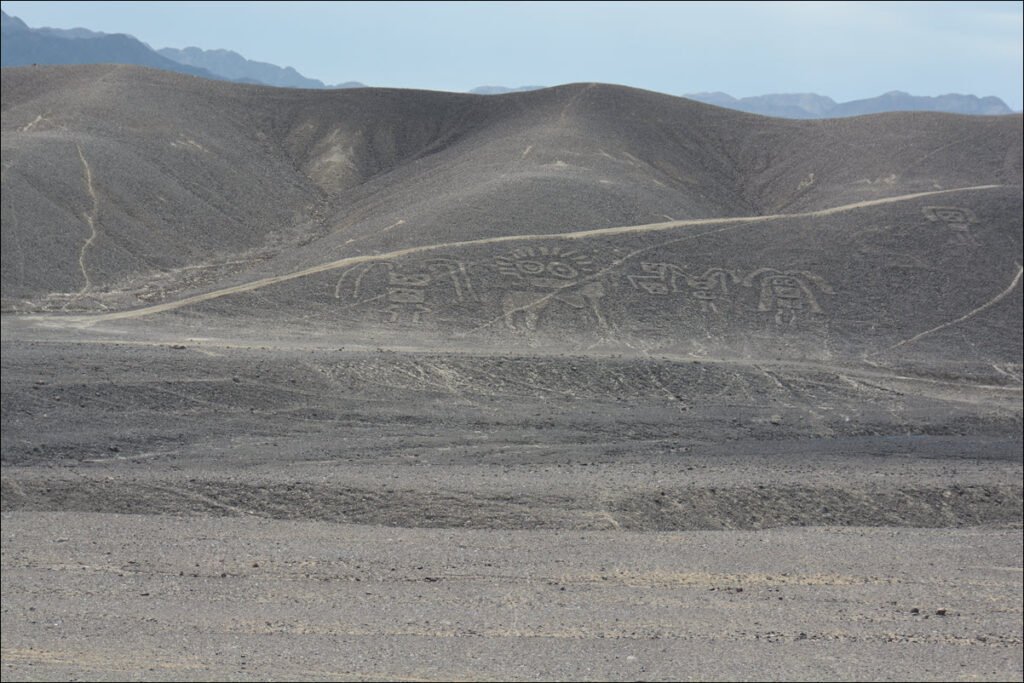
We then made the long ride back to Lima, with a stop at the vineyard again for lunch. We finally returned to our Lima hotel about 10:00PM, very tired, knowing the next day was starting at 5:00AM.
Puerto Maldonado
The next morning, we packed up and headed for the airport, for a domestic flight to the Amazon rainforest town of Puerto Maldonado in southeast Peru. At the Puerto Maldonado airport we were picked up and driven to the Rainforest Expeditions headquarters for the next leg of our trip.
Together with about thirty other people we took a 45-minute bus ride to a boat landing on the Tambopata River. From here, we were herded into the local river transport – long narrow boats with a canopy, powered by 45hp outboard engines. We motored a little way upriver and stopped on the river for a box lunch. Then, after lunch we motored about 45 minutes to another river landing of the Posada Amazonas, a jungle lodge where we spent the next three nights.
Posada Amazonas
The Posada Amazonas jungle lodge is located within the protected rainforest in the communal reserve of the Ese Eja Native Community of Infierno (an indigenous rainforest tribe). This is part of the Tambopata National Reserve, one of Peru’s most important conservation areas. The lodge itself is operated by Rainforest Expeditions, with 75 percent of profits going to support the native community.
The lodge is only accessible by river, designed to blend with the local ecology. It was a gorgeous sprawling structure built of varnished tropical hardwoods, reeds, and a thatched roof. No outside walls – the roof had a three-foot overhang, and the rooms had open rails around the exterior side. At check-in, we were advised to keep any snack foods protected in a small locker provided in each room, to keep monkeys from coming in and stealing it. Winnie seemed not impressed about having monkeys raiding our rooms.
We were also asked to not wear shoes inside the lodge. So, we went barefoot around the lodge during our stay. For jungle hikes, the lodge provided rubber boots as most trails were muddy. We were at the tail end of the rainy season and had rain at least part of everyday there. As most of the lodge walkways were uncovered, we had to carry umbrellas walking between our room and the dining areas. Electric power, provided by solar panels and batteries, was turned off between 11:00PM and 3:00AM.
The food was uniformly excellent, grown locally by the indigenous community. Anything that can’t be provided by the local community has to be brought in by boat from Puerto Maldonado. There are no roads through this section of the rainforest.
Jungle Explorations
The lodge had a number of planned hiking and boating trips around the area. We were also assigned a tour guide and warned not to venture away from the lodge without our guide. Given the rain, heat and humidity, and generally wanting to take things easy, Winnie and I only took a couple of short excursions each day there.
We did get to visit a demonstration farm showcasing native fruits and vegetables; a sunset river trip, a morning tour on an oxbow lake further upriver from the lodge, and another evening sunset viewed from a tower extending above the tree canopy.
For More Images of the Rainforest , See My Gallery Page
I learned that our tour guide held a five-year degree in eco-tourism. Starting in 2007, Peru created strict licensing requirements for all tour guides. A standard license and certification require a minimum three-year degree. Eco-tourism certification is an additional two years, focused on rainforest ecology. Our guide could explain in detail anything I asked about the local flora and fauna, and he had a special interest in birding.
Oxbow Lake Excursion
The oxbow lake trip was my favorite excursion. The lake is part of the Cocha Tres Chimbadas Nature Reserve. The local community is very strict about the ecology in this reserve, so among other restrictions engines are banned on the lake (engine exhaust puts oils into the water). Our boat was propelled by a member of the local indigenous community using stern sculling. On the lake we had a chance to view some giant river otters and numerous tropical birds.
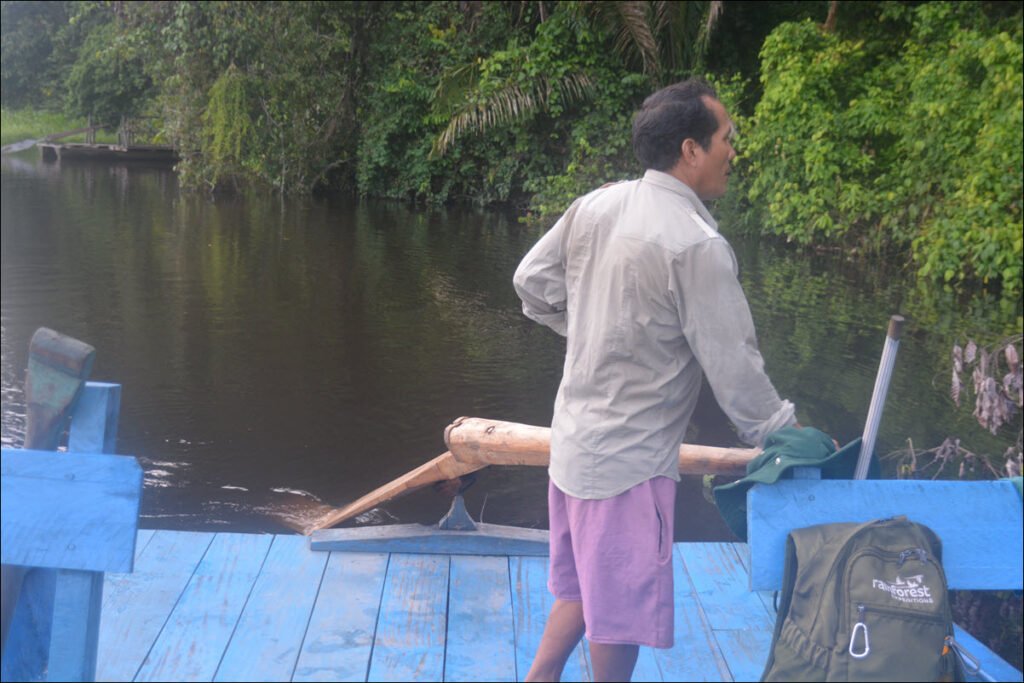
The oxbow lake itself is populated with a species of piranhas, which the river otters feed on. Our guide explained that up until five years ago people were allowed to swim in this lake. But researchers discovered that chemicals from sunblock and other skin lotions were leeching into the water, causing issues with the local wildlife.
I found this bit of information especially interesting as several years ago I learned that Hawaii has banned most brands of sunblock and suntan lotions (only state-certified “reef safe” lotions allowed). The reason being that chemicals from these lotions were leeching into seawater and damaging the coral reefs. Makes me wonder if we should really be putting these lotions on our skin…?
Next Stop The Andes
We left on a 9:00 boat run back to the Puerto Maldonado boat landing, then bus trip to the Rainforest Expeditions headquarters, then another bus trip back to the airport. Even after just a few days at the remote lodge, being “back in civilization” felt strange.
A Bumpy Arrival
We had a 12:30 plane trip to the mountain city of Cuzco, with connections via Lima. We arrived in Cuzco about 5:30, only to discover that somewhere along the way Sky airline (Peru domestic airlines) had misplaced my bag. Winnie’s suitcase did arrive, and we had our carry-on backpacks. The kicker was that we were scheduled to be moving around for the next four days. Even if the airline did find my bag, I would literally have only the clothes on my back for the next four days. Not to mention, everything in my bag was various levels of damp-wet from being in a tropical jungle. Damp clothes packed in my bag for four days was going to be unpleasant.
It didn’t help my mood that the airline agent who filed my missing luggage claim explained, in broken English, that if I had any aerosols or lithium batteries in my bag it may have been confiscated by airport security. I had to plead guilty to having packed an aerosol can of shaving cream. Leaving me wondering if I had permanently lost my bag.
As we checked into our hotel, we asked the desk clerk for help in finding shops to replace essentials – iPhone charger adapters, toothbrushes, underwear, and hiking essentials for the Machu Picchu leg of our trip. The hotel happened to be off the central plaza of Cuzco, so shops catering to tourists were prevalent.
We immediately did emergency shopping to replace my essential needs. Winnie got to try her bargaining skills on local merchants, who easily matched her skills. Then we had supper.
Not Adjusting Well to Altitude
Cuzco is at an elevation of 11,152 feet, the highest elevation I’d been at (outside of an airplane) since – my last trip there in 1979. It was the highest elevation Winnie had ever experienced. I now realize I started suffering symptoms of altitude sickness as soon as we arrived. That night I experienced a severe loss of appetite and had trouble sleeping. At the time I passed it off as just being tired from our jungle excursion and irritation at losing my bag.
The Road to Machu Picchu
We were picked up next morning for the start of our Machu Picchu adventure. This time we were in a van with six other couples along with our tour guide.
After an obligatory tourist stop at a Llama and Alpaca textile outlet, we drove to Sacred Valley, formerly a major farming region of the Incas. Our tour guide led us around Pisaq, a protected archeological site of Incan ruins. During the time of the Inca Empire this was a major farming region. The terraced hillsides and stonework fascinated me. Even Winnie was impressed, no minor feat as she grew up in a farming region in southeast China with terraced hillsides.
For More Images of Pisaq and the Sacred Valley , See My Gallery Page
I was also impressed by the weather. During our two-hour tour of Pisaq the weather started at 80 degrees and clear skies with bright sun. By the end of our tour, it was raining hard, and temps were in the 60s. Gotta love the high mountain weather, even if it is only 9,751 feet elevation.
Lunch and Ollantaytambo
Our next stop was lunch. I still didn’t have much appetite, but lunch was a wonderous buffet event that included dishes of “cuy” (guinea pig) and alpaca. Both were dishes I had vowed to try on this trip. After lunch we headed on to the town of Ollantaytambo, with another major Incan archeological site. This site features series of terraces designed for farming the hillsides, seemingly perfectly adapted for the particular terrain. The town itself has been continuously inhabited for at least 3,500 years.
For More Images of Ollantaytambo, See My Gallery Page
After this tour, Winnie and I parted ways with the rest of our group. Our guide dropped us off at a hotel located off the town’s main plaza. He explained we would be picked up the next morning about 5:30AM for our day hike on the Inca trail to Machu Picchu. We should only carry in our backpacks what we would need for one night and leave the rest of our luggage at the hotel. I commented that would be pretty easy for me, given I was still looking for my bag. About all I had were clothes I was already wearing, along with my camera gear.
That evening Winnie and I explored this pleasant little town. We also discovered that pizzas cooked in wood-fired ovens was a big thing here, so we had a decent pizza for dinner. To add a bright note, I did receive a text from Sky Airlines that they had located my bag. I spent about an hour texting between the airlines and our tour operator, located in Cuzco, to arrange delivery of my bag to the Cuzco hotel we would be returning to.
Before we went to bed we packed our backpacks for the big adventure.
Packing For The Trail
I had spent months planning and selecting the clothing and equipment I wanted for this Inca trail hike. My misplaced bag contained almost everything I had chosen. So, we improvised on-the-fly.
During our emergency shopping in Cuzco Winnie helped me pick out a long-sleeved thermal T-shirt (black), and some decent hiking pants. We also bought a replacement hiking pole and extra undershorts. Fortunately, I had packed my light wool sweater and warm socks in Winnie’s luggage in Puerto Maldonado. We also had our rain ponchos as I had put them in my backpack when leaving the rainforest.
Unfortunately, my only shoes were the light slip-ons I normally wear when flying, as my “sturdy hiking shoes” were safely packed in my misplaced bag. I didn’t buy new shoes in Cuzco as I didn’t want to risk getting blisters. So, I went with the shoes I had and not the shoes I wished I had.
Winnie was well-outfitted for the hike. I advised her to pack only essentials for the next two days / one night to minimize the weight of her backpack. But her definition of “essentials” was very different from mine. I warned her about overpacking, but she insisted she needed everything she stuffed into her backpack.
Leaving Ollantaytambo
We were picked up at our hotel at 5:30 in the morning and driven to the train station at the other end of town. We met up with our group of ten other people (five couples) who would be with us for the next two days. Everyone in our group was Americans hailing from various parts of the U.S. Looking around, I was sure I was the oldest person in our group. The rest ranged from 20-somethings up to one other older couple (less old than me).
The train arrived; we all climbed in and chugged off into the early morning light. It was about a one-hour trip to our starting point.
The Inca Trail
The entire Inca Trail runs from the city of Cuzco to the archeological site of Machu Picchu. During the heyday of the Incan Empire, this trail was the main road connecting the two cities, and the only access into and out of Machu Picchu. The entire trail, as preserved today, is about 26 miles at altitudes ranging from about 9,000 feet to 13,766 feet.
Hiking the entire trail is a four-day camping event. Tour operators provide porters to haul common equipment and food for hikers. Individuals are required to carry their personal items (clothes, toiletries, bedding). Campsites have been developed at selected points along the trail which provide toilets, showers, and flats spots large enough to pitch tents. Peru’s strict permitting system limits the number of people allowed on the trail any given day.
There are also shorter trail options; from the four days / three camping nights all the way down to one day with a second day exploring Machu Picchu. The shortest option includes one night in a hotel in the town of Aguas Calientes, nestled below Machu Picchu. For shorter hikes people access the trail at pre-designated locations from the railway line. There are no roads between Aguas Calientes and the outside world.
Back in 1979 when I first learned of the Inca trail my ambition was to hike the entire length. However, when we planned this trip in 2024 the wisdom of age won over the enthusiasm of youth. Also, Winnie announced she had no intention of sleeping in tents on a mountainside. That pretty much limited us to the “one day hike with hotel night in Aguas Calientes” option. It turned out to be the right decision.
Our Hike Begins
Ollantaytambo is located on the semi-arid side of the Andes mountains (as is Cuzco). At some point along the way we crossed over to the rainforest side and started seeing jungle. Our guides explained that this area was considered “temperate rainforest” because of the altitude. As elevation decreased, the climate would become tropical rainforest we had just left a couple of days prior. Once we stepped off the train, I could feel the rainforest humidity, even though the early morning air was chill.
The trailhead for our one-day adventure was at “Marker 104KM (altitude 6,561 feet),” a stop along the train tracks paralleling the Urubamba River. Our group formed up alongside the train, along with other tour groups totaling about 60 people. Each group was accompanied by their tour guides and porters. We ambled over a walking bridge crossing the Urubamba River and up to the trail check-in point on the other side. Meanwhile, the train chugged off to its final destination of Aguas Calientes.
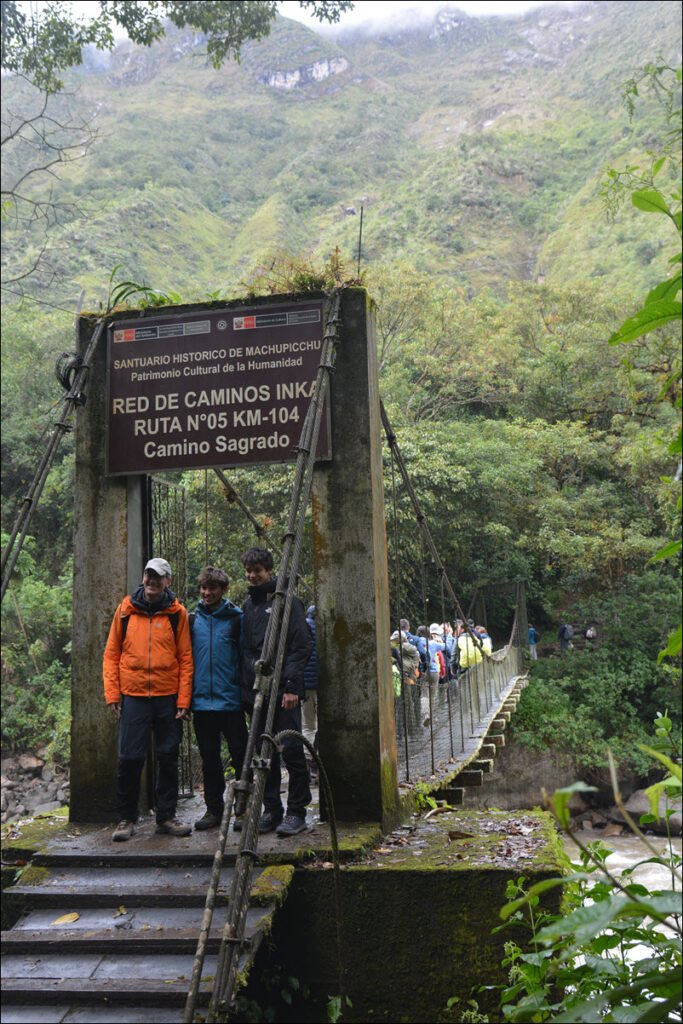
Checking in at the trailhead involved showing passports and matching up names with our reservations made months earlier. Our tour guides had box breakfasts and water for each of us, a nice touch for the start of what would be a grueling day hike.
Once through the checkpoint, our two tour guides briefed us on the hike. Then we started off by passing through a small archeological site of several Incan buildings. Our walk next took us through a small village of families who still farm in the area. Followed by some lightly wooded fields. This area was all flat ground, and I told Winnie “See, this will be a nice walk.”
Then the trail started rising.
The Alternate Route
Our lead guide explained that, due to a landslide on the “normal trail” some weeks prior, we would be taking an “alternate route” up to the site where we’d have lunch. From this point to our lunch stop it would mostly be uphill, about three miles. He told us to take our time, set our own pace, and we would be met at the top for a “delicious lunch prepared by one of the finest chefs in Peru.” Then both guides took off at a slow trot up the trail.
The twelve of us in the group sort of looked at each other, collectively shrugged, and started walking. I could tell Winnie wasn’t completely thrilled. She was already feeling the weight of her overstuffed backpack.
From this point until we reached the lunch stop it was almost all uphill. Winnie and I set separate paces, and we occasionally met up at a rest spot. I quickly got into a pure “adrenalin-fueled power mode” to drive me up the mountain. The two youngest couples in our group stayed ahead of us, but not by much. The rest of our group gradually trailed further behind.
A Grueling Hike
It was a grueling hike, probably the toughest hike I’ve ever taken. On the bright side, the increasingly higher-elevation views of the mountains and valley below us were breath-taking.
For More Images of The Inca Trail, See My Gallery Page
I had started the hike wearing my wool sweater, but quickly took it off, wearing only my black thermal T-shirt. My shirt was quickly drenched with sweat, but by now the air was warm enough that I didn’t feel a chill. Occasionally, I heard people shouting, “Porters coming through!” and was passed by young men, local Peruvians, running up the trail hauling backpacks almost as large as they were. Those packs had to be 50 pounds or more each.
Then, after a final 45-degree rise, I reached our lunch destination. I felt as if I stumbled upon a refreshing oasis in the midst of a brutal desert.
Lunch Break
I managed to be the fifth person in our group to arrive, just a few feet ahead of Winnie. This seemed to seriously impress the two youngest couples ahead of me, who told me several times “you did really great.” I decided to take the compliments…
We arrived to find two large tents set up for our group: one for the dining tent and one for the kitchen. The dining tent had tables setup together, along with plastic chairs for each person. We had metal camp utensils, and I could see the kitchen tent contained a decent amount of cooking gear. All of this had been hauled up by our porters that morning, and all would be taken back down the mountain that afternoon.
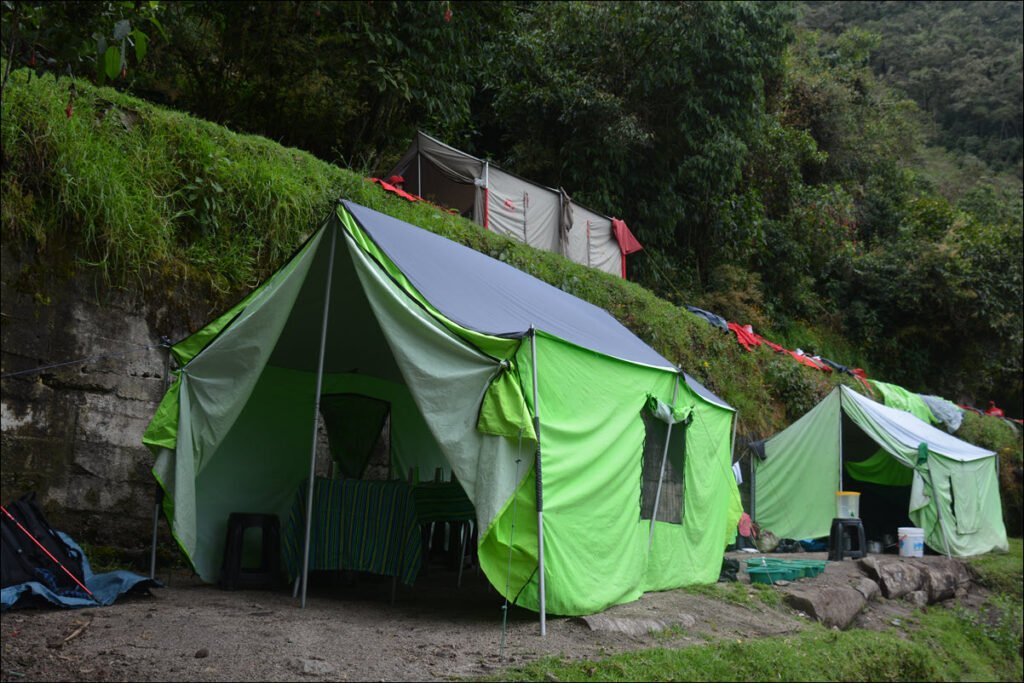
The site itself was the final campsite for overnight hikers before reaching Machu Picchu. The site included proper toilets with sinks and even camp showers. It also had enough leveled ground for a few tents.
As our group members arrived, we assembled under the dining tent to talk and wait for lunch. The final couple arrived about one hour after Winnie and me, and then we ate. Our tour guide did not exaggerate about offering a delicious hot lunch. We were served ten different offerings of “typical” Peruvian cuisine. Each dish was delicious, and there was plenty of food to go around.
Besides providing a delicious camp meal, lunch gave me a much-needed rest.
The Rest of The Trail
After lunch we took a short detour to the archeological site of Wiñay Wayna (Forever Young) at 8,792 feet elevation. This site was breathtakingly beautiful, the most impressive Incan site I’d seen so far.
For More Images of Wiñay Wayna and the Inca Trail, See My Gallery Page
From there, we started the last leg of our hike to Intipunku (Sun Gate) and Machu Picchu. Although this leg had some uphill climbs, it was not nearly as rough as the pre-lunch trek. But then we arrived at the “Monkey Stairs,” colloquially referred to by Peruvians as “The Gringo Killer.”
The monkey stairs are a set of fifty stone steps at about a sixty-degree climb. These are steep enough that people have to climb up on all fours. I scrambled up these steps using a final burst of adrenaline. And met Winnie at the top when she arrived.
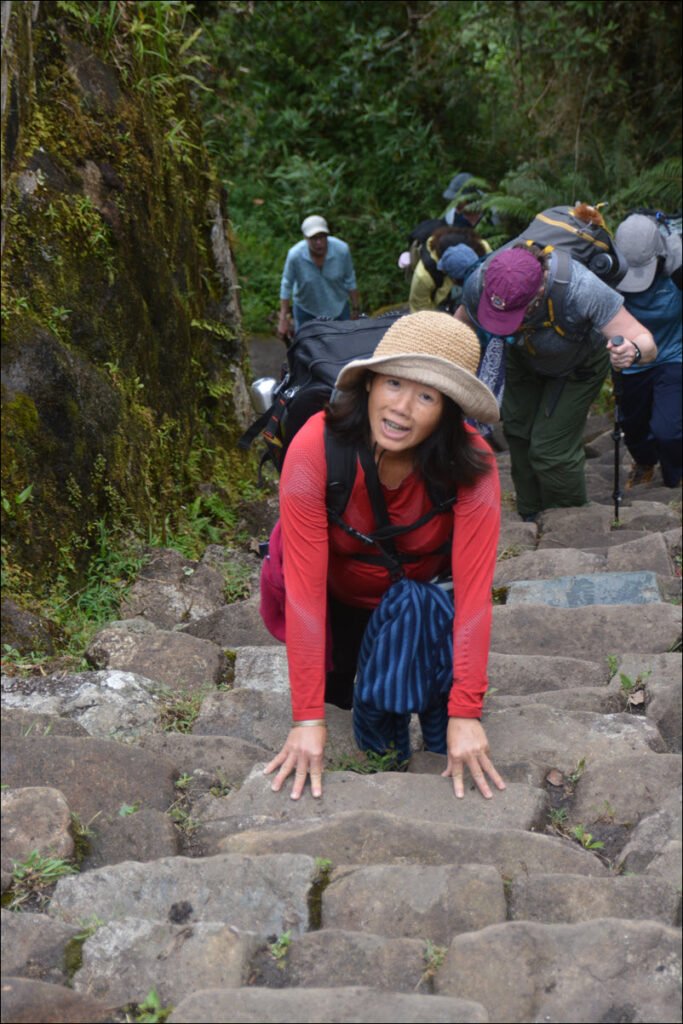
The Intipunku (Sun Gate) was a few feet further down the trail. In the days of the Incan Empire, when Machu Picchu was a living city, this was the city’s entrance guardhouse. From here, we had the view of Machu Picchu made famous by innumerable travel posters. This was also the highest point of the section of trail we hiked.

We took a break at the Sun Gate for rest and photo opportunities. Our guide promised us from here to Machu Picchu was all downhill. We had a leisurely walk down to the traditional entrance of Machu Picchu, then on to the tour bus parking lot on the other side.

Celebratory Dinner
We rode a tour bus down the switch-back road to the bottom of the mountain and into the town of Aguas Calientes. From the bus stop, we walked (uphill) to our hotel. Our guide gave us one hour to wash up then meet for dinner at a nearby restaurant. Dinner that night was a celebratory event, given the rigors of the day’s hike. I actually had an appetite, even though I continued to otherwise not feel well.
During dinner, I learned that we had hiked a total of 7.4 miles and climbed a total of 2,600 feet in elevation. Our high point would have been at Intipunku. Machu Picchu itself is at an elevation of 7,970 feet, 3,182 feet lower elevation than Cuzco.
Exploring Machu Picchu
We met our guide at our hotel early the next morning and walked (downhill) to the tour bus stops. We rode back up the switchback road to Machu Picchu and were among the first group of people getting access that day. I learned that our guide was certified as an “archeological” tour guide, meaning his training was focused on Peru’s archeological treasures. He certainly proved knowledgeable on the history and construction of the city.
For More Images of Machu Picchu, See My Gallery Page
The three-hour tour felt a bit anticlimactic, given everything I’d seen and done the previous few days. Although I don’t remember too much from my 1979 visit, I could tell the site has been much more developed for tourism over the past years. Probably for the better, and given all visitors are now required to be with a licensed tour guide at all times, I think Machu Picchu is much better protected for future generations.
Our tour concluded with group pictures and passing out the obligatory “Alpaca Expeditions” souvenir T-shirts. A reward befitting people who had just survived a 7-plus mile hike climbing 2,600 feet in elevation. We rode the busses back down to Aguas Calientes and lunch. Once again, we had a wonderful lunch, and I almost had enough appetite to enjoy it. Then we had a couple of hours to explore the town before catching the train back to Ollantaytambo.
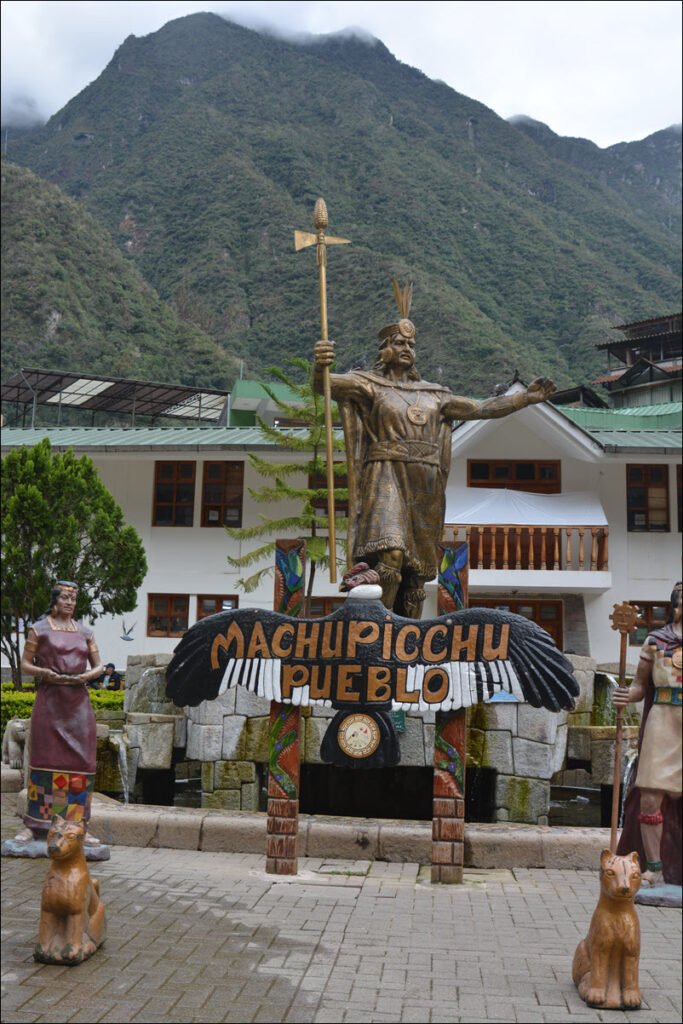
Back To Cuzco
In Ollantaytambo a driver and tour guide met us in a van for the remaining trip back to Cuzco. The plan was to arrive at the Alpaca Expeditions office in Cuzco where Winnie’s suitcase was being stored. Also, I needed to pay the balance of our trip.
I had paid a deposit back in November when we made our reservations. Our agent explained they would accept the balance at their Cuzco office whenever we got there. The fact that we were ten days into our two-week itinerary without paying the balance didn’t seem to faze them.
Our hotel, where my waylaid luggage had previously been delivered, was on the other side of the main plaza from the Alpaca Expeditions office. So, I asked Winnie to go straight to our hotel, claim my bag, and start sorting out the wet laundry. Our tour guide went with her. I went to the office to settle up our bill and discuss the rest of our trip.
Cancelations
After settling our bill with our agent, I met the tour guide who was planning on leading the next day’s adventure – a trip to Rainbow Mountain. He explained he would pick us up at our hotel 4:30 the next morning for a two and a half hour drive up the mountains, have breakfast, then start our trek. The trailhead was at an elevation of 14,300 feet, so we should be prepared for cold weather…
At that point I stopped him. I was dead tired, feeling seriously unwell, and could not bear the thought of waking up at 3:30 the next morning for a long drive and another mountain hike. The thought of climbing to such a high altitude after the previous day’s trek also concerned me. So, I asked to cancel and switch with a shorter, less stressful tour of Cuzco. The guide seemed disappointed, but our agent agreed. He had a tour of Cuzco already scheduled for the next afternoon and promised to get us on it.
I walked to our hotel and explained to Winnie our change in plans. She didn’t fuss too much, so I could tell she was as tired as I was. Meanwhile, she had pulled out all my wet, nasty-smelling clothing and filled a laundry bag. Not knowing that hotels charged for laundry by the item, she had also thrown in most of her dirty clothes. She thought laundry was charged by the bag. I didn’t know she didn’t know about item pricing, and I was too tired to discuss dirty laundry.
On our way out to dinner I dropped off our laundry at the front desk for next afternoon return.
Touring Cuzco
I didn’t sleep well that night, at all. I finally realized the problem; as I started to relax and fall asleep, I suddenly felt as if I could not breath. Not being able to breath jerked me awake. And the cycle repeated itself, all night long. I was finally able to fall asleep about 4:00AM, which would have been just before pickup time if we were still going to Rainbow Mountain. Winnie and I both slept until about 10:00 that morning, then had lunch before our Cuzco tour.
We were picked up at 1:00 and started with a visit to the archeological site of Sacsayhuaman, which overlooks the city of Cuzco. From there we toured the sites of Q’enqo , Puca Pucara, and Tambomachay. Then we rode back into Cuzco and toured Q’oricancha (Temple of the Sun) and finished at the main Spanish cathedral in Plaza de Armas. I was especially happy that Winnie had a chance to see the Temple of the Sun. I had toured it on my 1979 visit and had been strongly impressed both with its construction and its history.
For More Images of of the Inca Sites around Cuzco, See My Gallery Page
We went back to our hotel and picked up our laundry. The bill was over $100 USD. Winnie was not happy. But at least we had clean clothes for the remaining days of our trip.
Once again, I did not sleep well that night for the same reasons as the previous night. I also became aware that Winnie was having trouble sleeping. I started feeling worried about altitude sickness, but still thought we’d be okay for the last three nights of our trip.
On To Puno and Lake Titicaca
The last part of our planned itinerary was a three-night trip to Lake Titicaca, the highest elevation lake in the world. We were picked up at out hotel about 7:30 and taken across town to the tourist bus station. There, we boarded the most gorgeous long-haul bus I’ve ever seen. Our tour guide briefed us, explaining that we would be stopping at a few archeological sites along the way, and would be arriving in the town of Puno, a harbor town on the lake, around 5:00PM.

Our schedule was to stay overnight in Puno, then take a boat ride the next day out to the floating islands of Uros. We would stay at a family-run Bed and Breakfast that night, then the following day visit another island on the lake. Finally, we would return to Puno for the last night of our trip. On Saturday we would fly out of the nearby town of Juliaca to Lima, then on to home. It was a good plan, and I was excited for the chance to visit this lake.
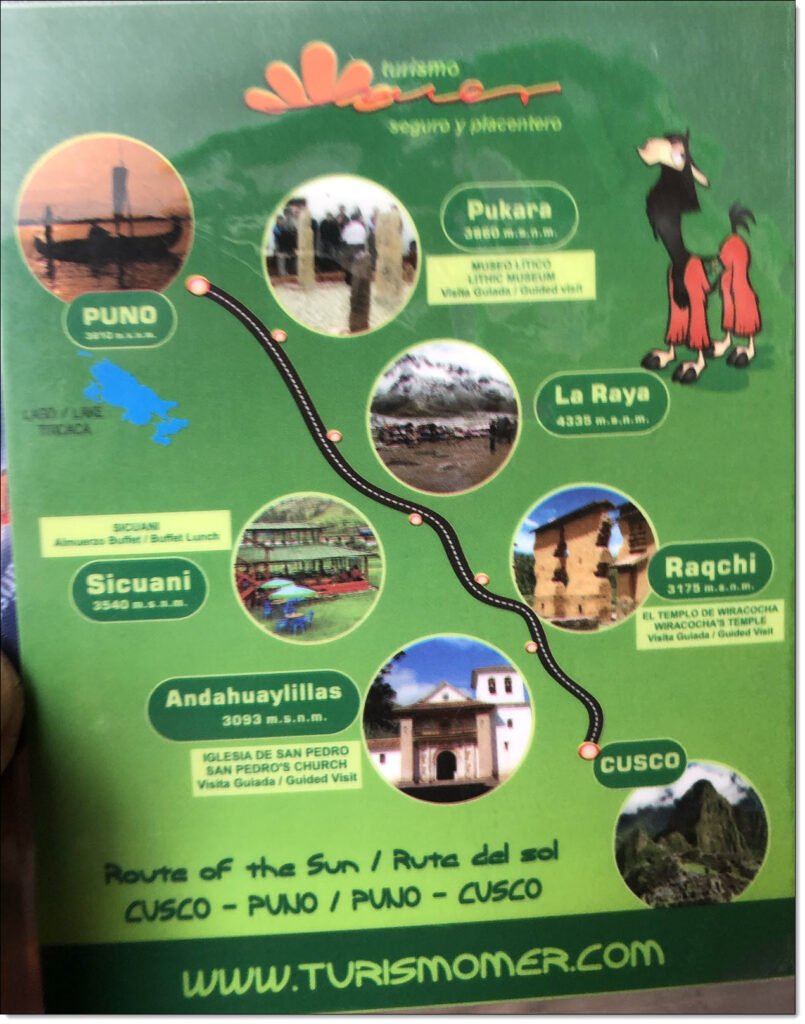
The Road To Puno
Our bus rumbled out of Cuzco and headed for Puno. I learned we followed the “Ruta del Barroco Andino,” the “shorter route” of the Andean Baroque Route which passes through several towns built around the Andean Baroque artistic movement. The first town we stopped at was Andahuaylillas, and we had the opportunity to tour the lovely church.
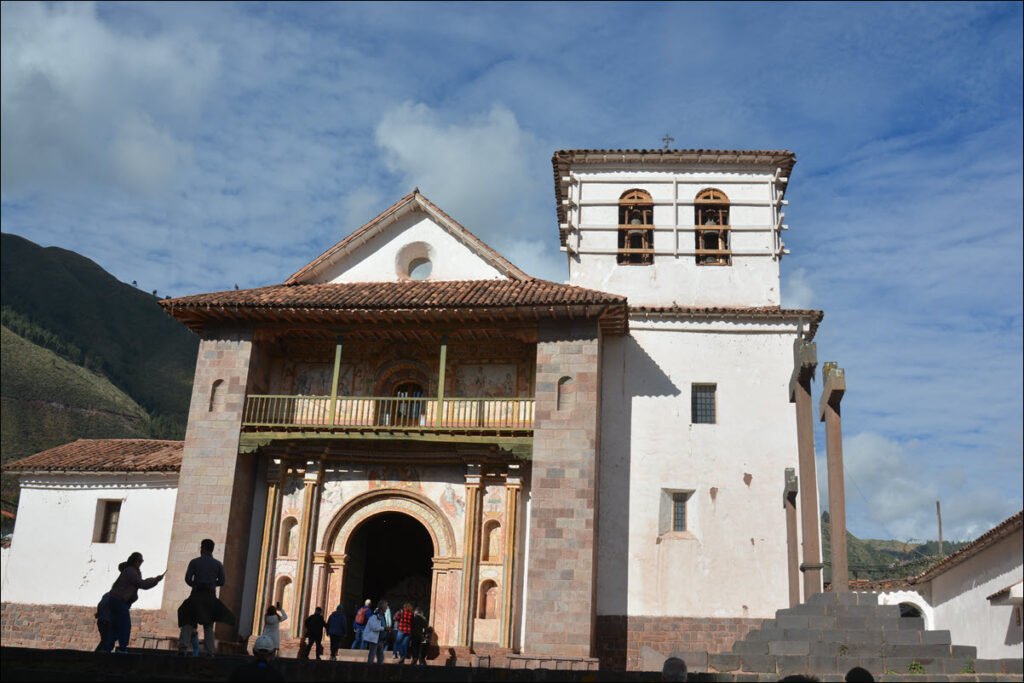
From here we next stopped at the archeological site of Raqch’i, with its Pre-Incan structures, and once again had the opportunity to briefly explore. Our tour guide, as with every tour guide, we had in Peru, was extremely knowledgeable and gave wonderful explanations of what we were looking at.
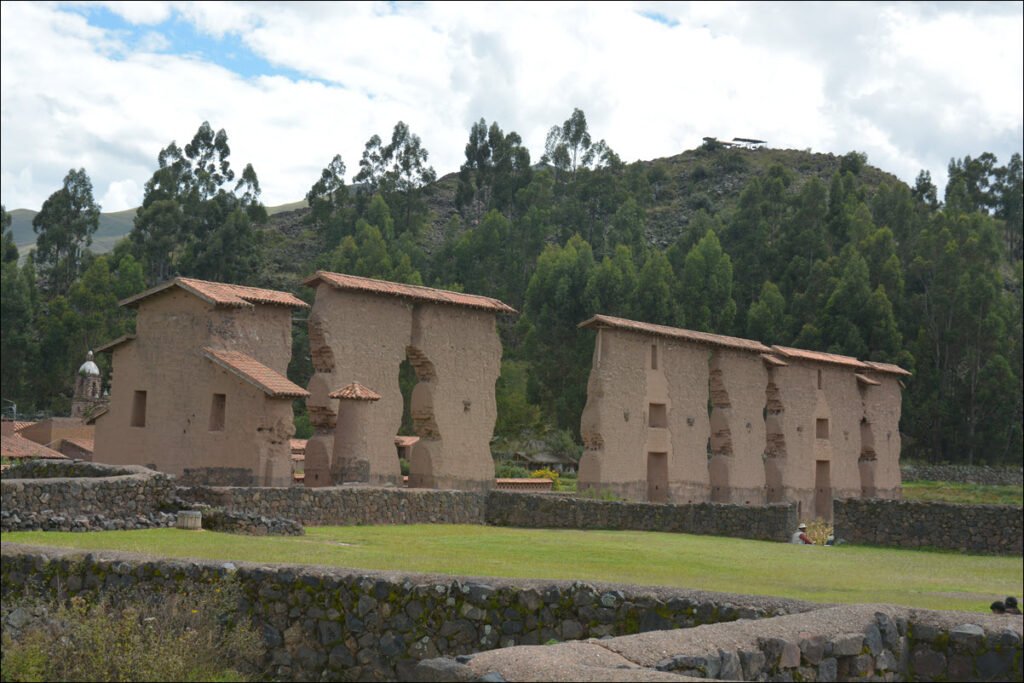
After Raqch’i we drove another hour or so, then stopped for lunch at a buffet restaurant that looked like it existed solely for the tour busses passing through. But the food was great, and the scenery was nice. After lunch break, we rumbled out of town and on to Puno.
The High Point of Our Trip
So, another hour passed, and we arrived at what has to be the high point of our trip; The mountain pass Apu Chimboya, elevation 18,008 feet. This is in fact, the highest elevation I’ve ever experienced outside an airplane.

We stopped for ten minutes to take pictures (of course), and our guide warned us to “take it easy” walking around. It was good advice. I felt winded just walking to and from the bus for a photo opp. Winnie told me she felt the same – it was just really hard to breath.
Breaking Point
I now believe this mountain pass was our breaking point dealing with high altitudes. Right after the bus drove on, both Winnie and I fell into a deep two-hour sleep. I tried to pass off our sleep as result of lunch, but I suspect it was largely a result of the altitude. We woke up just as the bus made a final tour stop in Pukara, at a small museum showcasing the pre-Incan archeological history of the region.
After this stop we continued into Puno, elevation 12,556 feet, located on the shores of Lake Titicaca.
Puno
Our bus dropped us off at the Puno bus terminal, and our guide took us in a van to our hotel for that night. It was located just a couple of blocks from the town square. Winnie and I got situated in our room, then requested a restaurant recommendation from the front desk clerk.
The restaurant was located in the lovely town square. It was a pleasant restaurant, and the town square itself was delightful. After dinner we walked around exploring the town until it started to rain. Then we went back and – tried – to sleep. We were supposed to be picked up at 7:30 the next morning. A reasonable time, considering how early most days started, but still early enough.
Medical Alert
That night Winnie and I both “hit the wall” dealing with altitude. I was unable to sleep, experiencing the same issues of falling asleep only to feel like I was suffocating, which would jerk me back awake again. About midnight, Winnie rolled over and said “Dear, I can’t sleep. I can’t breathe.” Until then, I thought Winnie was sleeping soundly. I told her to get up. We both got dressed and went down to the front desk.
When we first arrived in high-altitude Cuzco, we were advised that all hotels have medical oxygen for guests who have issues breathing. I made a leap of faith that our hotel here in Puno had the same. It did. I explained to the front desk lady we were having problems breathing and could not sleep. She immediately got a man over to us pulling a large oxygen bottle with breathing mask.
Winnie spent ten minutes breathing pure oxygen – the medically allowed time limit. Then the man put the mask on me for ten minutes. Winnie and I both seemed to feel a little better, and the front desk lady told us if we needed a doctor, she could get one over from the nearby clinic.
We went back up to our room and unsuccessfully tried to sleep. After another couple of hours, and some discussion, we agreed we needed to cut our stay short in Puno and get back to Lima. That day, as quickly as possible.
Evacuation To Lima
I had seen a computer available for guest use in the hotel lobby, so we went back downstairs. I explained to the front desk lady that we needed to cut our trip short and get back to Lima that day. She helped me get online to the airline reservations site. Winnie and I did have one-way reservations from Juliaca airport to Lima, so I was sure I could get them changed. I quickly found two flights to Lima later that day, the first at 12:45PM. However, I also quickly figured out we’d have to be at the airport to change reservations.
Our travel agency did not open until 9:00AM. By now we had the full attention of the two hotel staff, but there wasn’t much anyone could do at 3:00AM. I was assured there was a shuttle bus available to get us to the airport if needed. But I also needed to cancel the rest of our trip reservations. I had no way of contacting anybody until the agency opened.
Lots of Help
Winnie and I packed up in expectations that we’d be flying back to Lima that day. When the breakfast room opened, we had breakfast, even though neither of us were able to eat much. Right at 7:30 our tour guide arrived for pickup. I explained we were having medical issues and had to get back to Lima as quickly as possible. Our guide immediately understood, texted our agency a message, and wished us luck.
At 8:45 I received the first text from our travel agency. I explained our issue and that we needed to get back to Lima that day. We negotiated canceling the rest of our trip reservations and agreed that once back in Lima we would take care of our own travel needs.
Over the next 45 minutes I received text messages from several people from the agency assuring us help was on the way. About 9:30 a taxi pulled up to the hotel and a lady walked in looking for us. She explained she was from Alpaca Expeditions and was here to help get us back to Lima.
Our luggage was already in the lobby, so we climbed into the taxi and drove off. As sick as I was feeling, I really needed to at least glimpse Lake Titicaca. I explained my request, and our agent graciously understood. She had the taxi driver make a detour down to the harbor, and Winnie and I had a few minutes to walk around taking pictures. It felt like a bittersweet ending to our big Peru adventure.
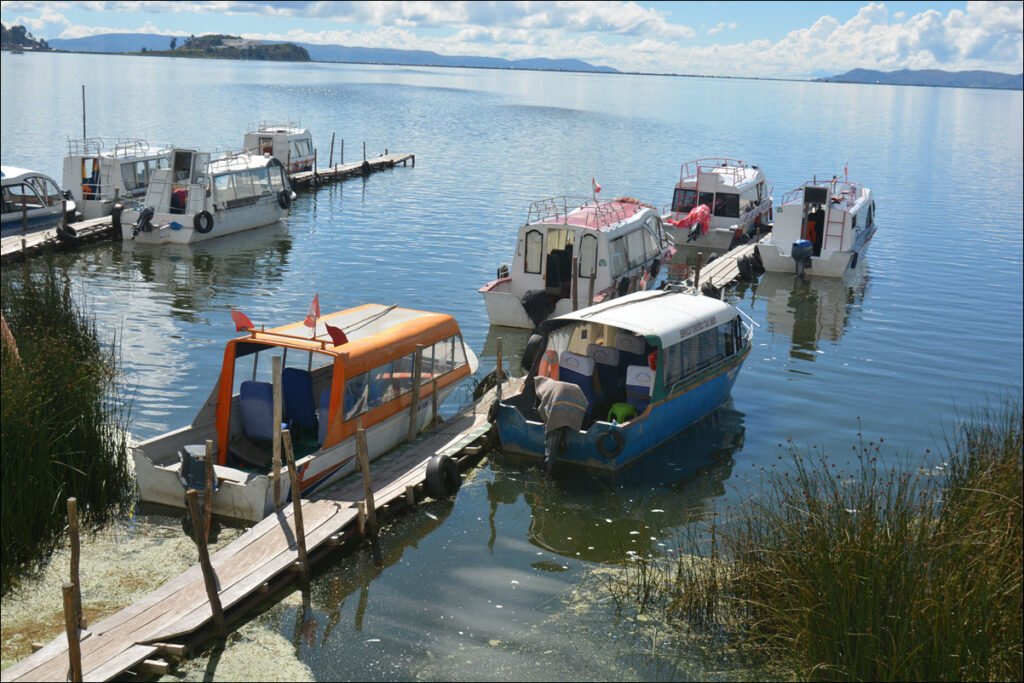
At the Airport
We had a nearly one-hour taxi ride to the airport. It felt like we were climbing but the elevation of Juliaca is 12,549 feet, about the same as Puno. By the time we arrived at the airport, I was having serious issues breathing. I felt I was continuously gasping like a fish out of water. At the airport our agent helped us find the ticket counter and explained (in Spanish) our issues. The ticket agent spent about one hour changing reservations and booking us on the 12:45 flight. We were fully credited for the amount we’d already paid, but this particular flight was more expensive, so we had to pay the difference.
The agent stayed with us until we got to the security checkpoint. We gave her a small tip for her help and thanked her for all the agency assistance in getting us out so quickly.
We finally boarded our plane, the doors closed, and we were on our way back to Lima two days early. I did notice that the moment the airplane doors closed, the plane was being pressurized. Cabin pressure continued increasing all the way back down to Lima. As cabin pressure increased, I started feeling better.
Back In Lima
We arrived back in Lima with no idea where we’d stay and no idea how to get there. Being experienced travelers, now actually able to breath, we leaped into traveling-on-the-fly action. Once we retrieved our bags we wandered out into the airport’s public areas advertising transportation.
Winnie located a shuttle bus service that ran to Miraflores, the same district of Lima we had stayed in our first two nights in Peru. I got on my phone and located several available hotels in Miraflores. With help of the shuttle bus booking agent, we identified an available hotel just a couple of blocks from one of the bus drop-off points. We made our reservations.
Less than two hours after arriving back in Lima, we were on a bus to our hotel. That night, I had the best sleep in at least one week.
The Last Two Days
We spent our last two vacation days exploring Lima. Again. Friday, we took another walk down to the Miraflores beachfront, a different route than we previously took, that allowed us to see more of the lovely coastline. Our Saturday flight out of Lima was booked for 10:00PM, as we originally planned for getting to Lima from Juliaca. So now we had all of Saturday for sightseeing. We used part of that time on an organized tour of Lima historical district. It was well worth it and allowed us to see another aspect of this beautiful city.
Saturday afternoon we caught the shuttle bus back to the airport. We did the obligatory duty-free shopping in the airport, spending the last of our Peruvian Nuevo Sols. We ended up with only several coins left, so obviously did good with budgeting our spending money.
After that, it was just a matter of waiting for our mostly uneventful flights back to Charlotte via Miami.
The Flight Home
When my bag was “lost” in Cuzco, the airline agent hinted that it was confiscated because I left an aerosol can of shaving cream in my checked bag. So, when we flew back to Lima from Juliaca I dutifully packed my shaving cream in my carry-on backpack. Airport security flagged it; I pulled the can out and showed the agent and was waved through.
I did the same thing when leaving Lima for home, no problems.
We cleared customs in Miami and had to recheck our bags through U.S. security. After dropping off our check bags Winnie and I had to go through the TSA’s “Porn Scan,” and have our carry-on backpacks X-rayed. My backpack was flagged for secondary inspection, and the TSA agent pulled out my humble can of shaving cream. In as nasty a voice as possible, she announced “You Can Not Take This In Your Carry-On Bag! If You Want To Keep It, You’ll Have To Check This Bag!”
I let TSA keep my shaving cream.
Ending Thoughts
So went an adventure I waited forty-six years to take. I’m left feeling both exhilarated and wistful. Exhilarated because I did manage to view some spectacular sights and experience a little bit of life in Peru. What I experienced remains magical, and I feel grateful I was able to see as much as I did.
But I also feel wistful for missing sights that would have perfectly capped off this trip, Rainbow Mountain and the floating islands of Lake Titicaca. I also feel wistful for not being able to fully enjoy the sights we did see. In truth, I started feeling unwell in the Amazon rainforest and then increasing levels of unwell all through our time in the Andes Mountains. I blame my age. I believe I waited too long, that I should have seized the moment and found a way to make this trip years younger. And above all, I feel wistful that there is so much more in Peru I’ll never have a chance to experience.
Winnie seemed better able to handle the environment, but she obviously also had medical issues. I feel bad that she was sick on a trip that I wanted her to enjoy as much as I expected to.
What I Hoped For?
Back in Aguas Calientes, after we finished our Inca trail hike and were having our group dinner, one of the young ladies in our group asked me “So, was the trail everything you hoped for?” I actually did not know how to answer that question then, and I’ve thought about that question since.
To answer now; I think it was. I wish it had been more, but I’ll take what I was able to achieve. This trip was a dream come true, and I’m happy I had my dream.
Related Posts
- A Sampler of Peru
- A Christmas-Time Vacation
- Cruising Back From Vacation
- Back From Hawaii, Back To Reality
Edited : May 27, 2025, for grammar and typographical errors.
Edited : July 3, 2025, to add additional photos and details.

